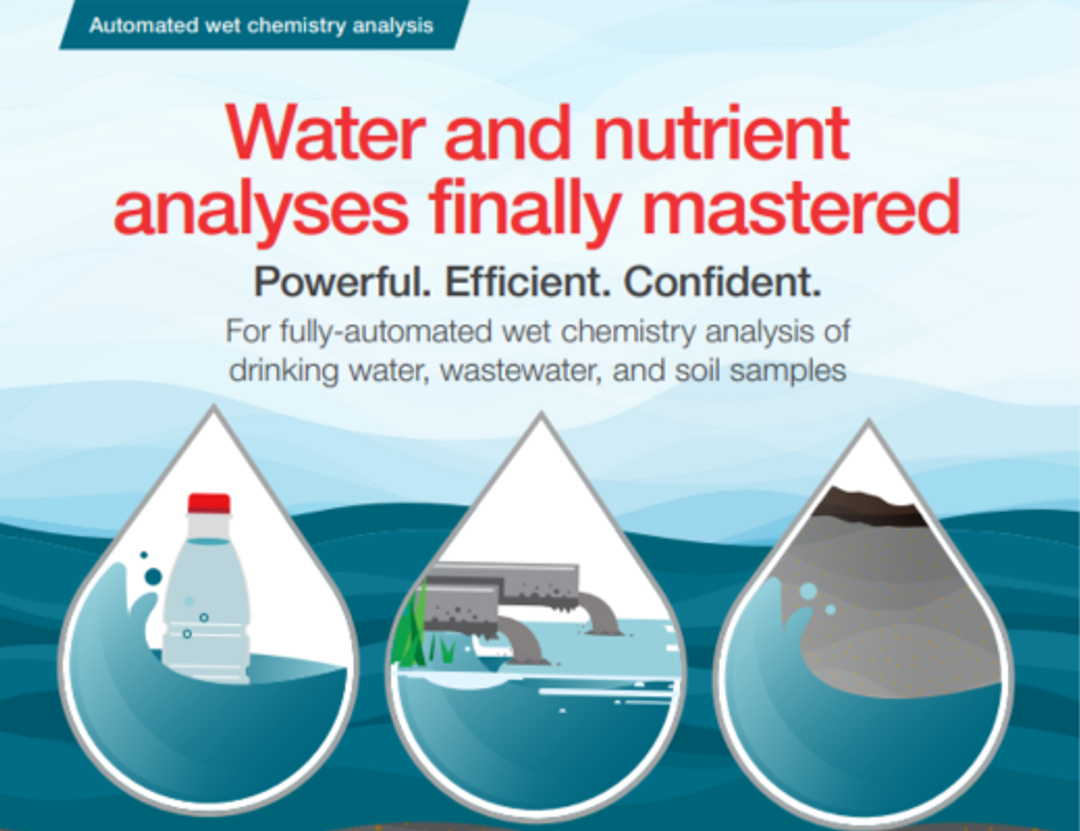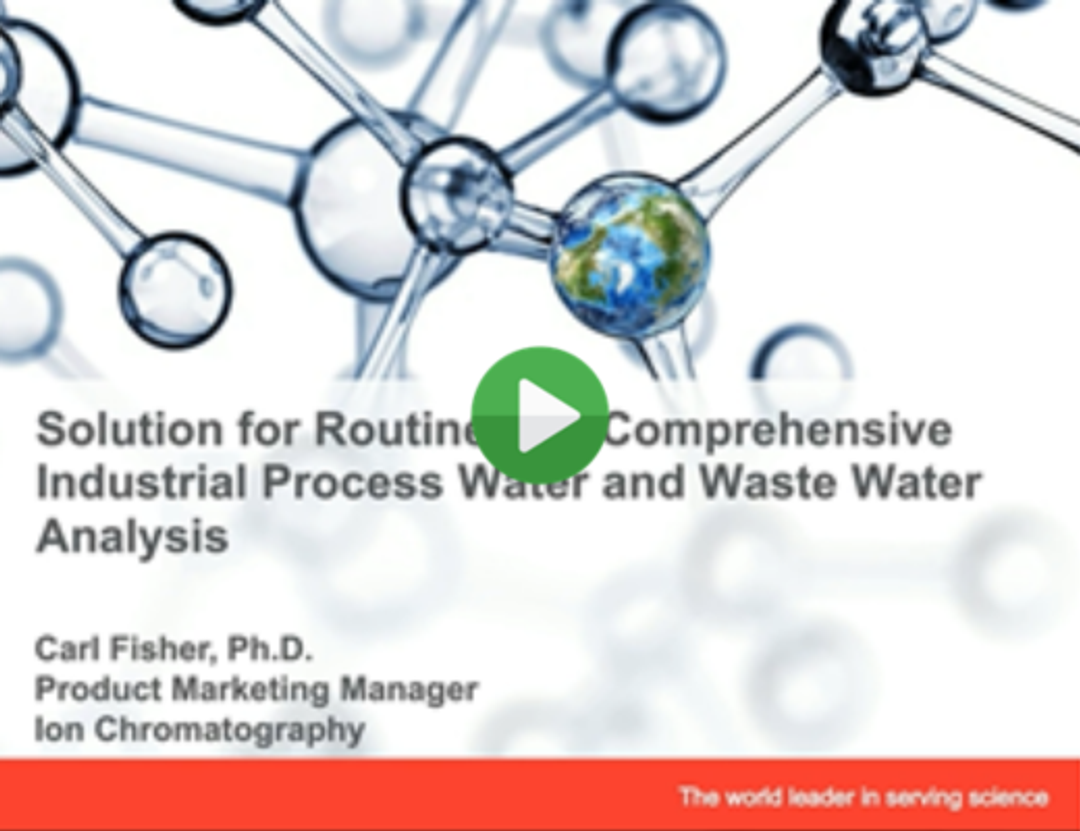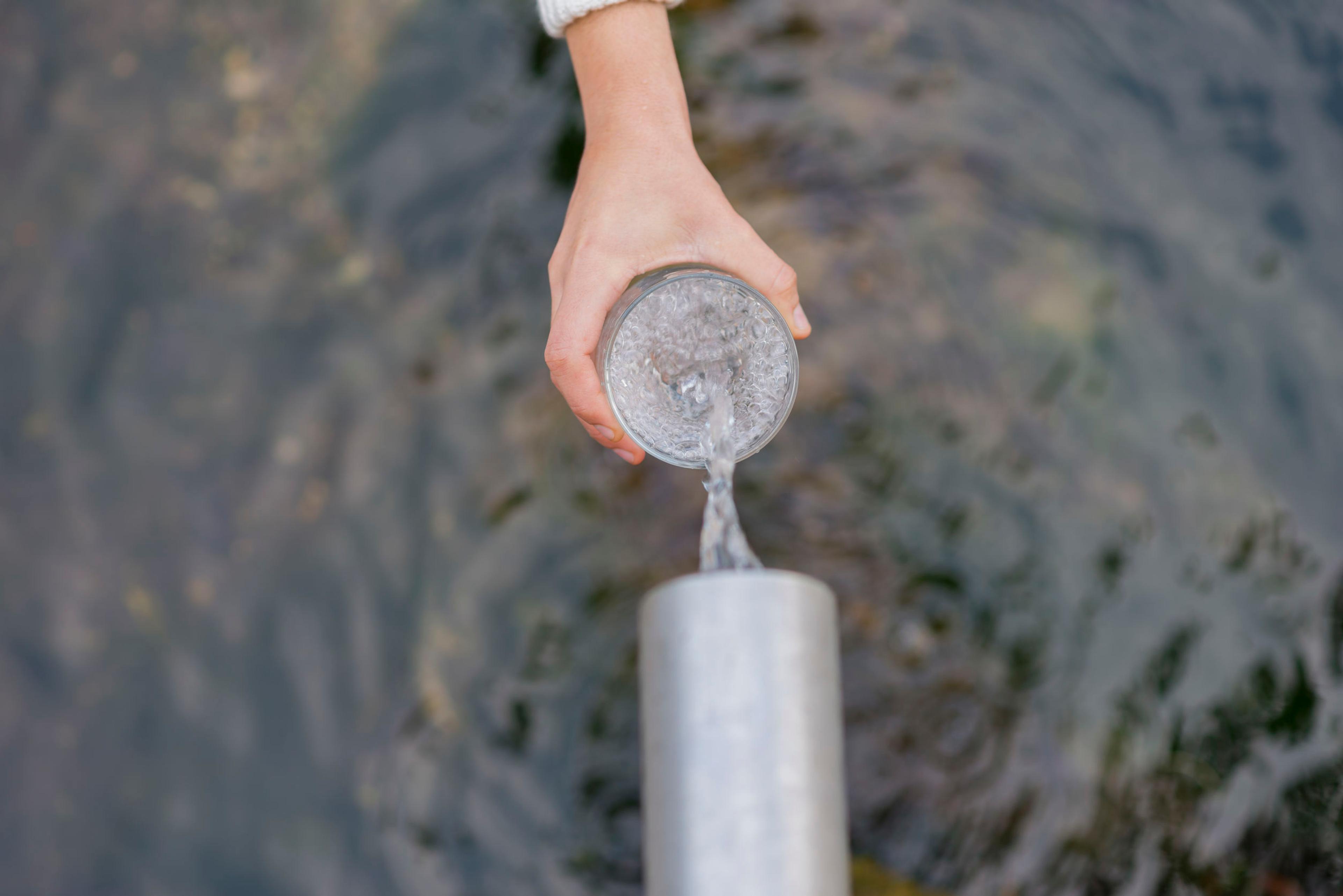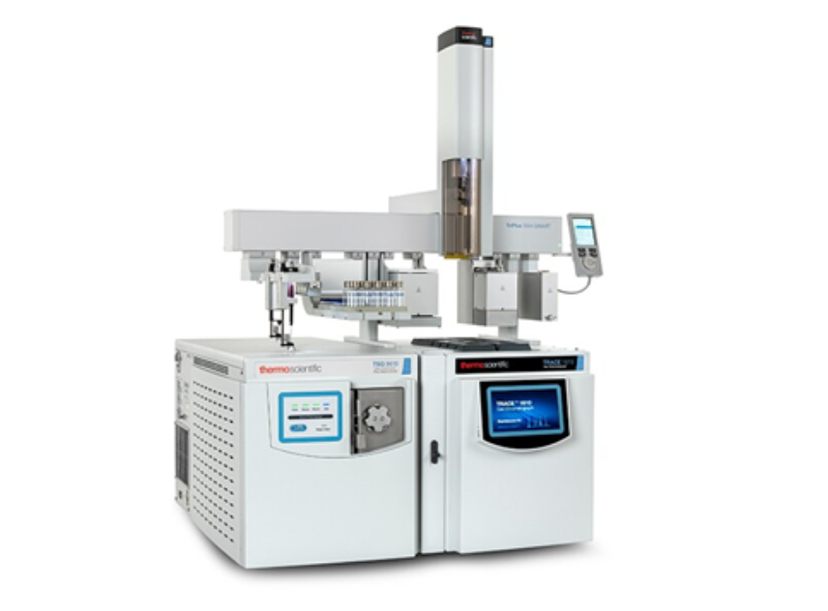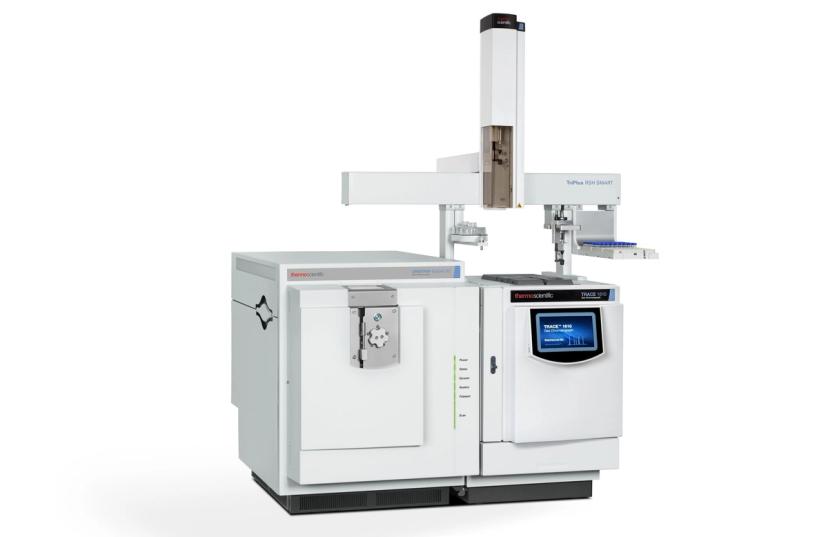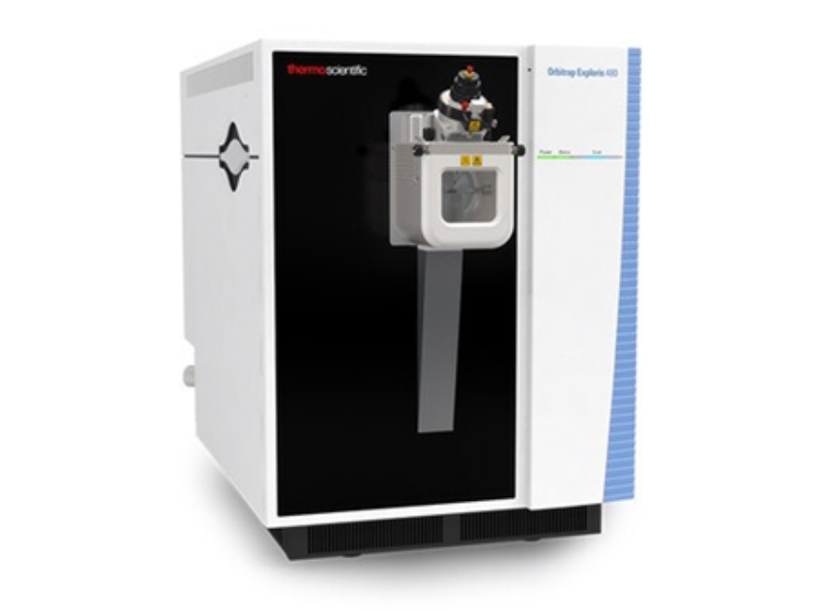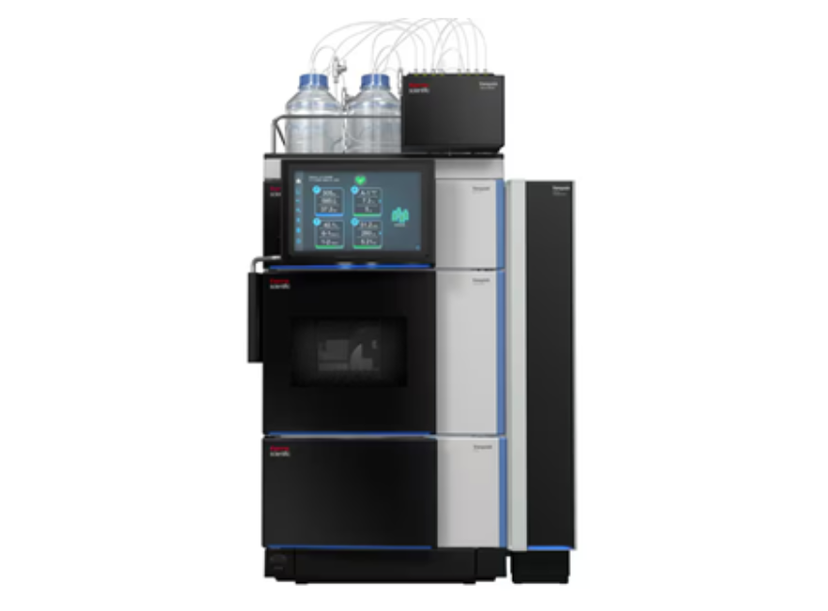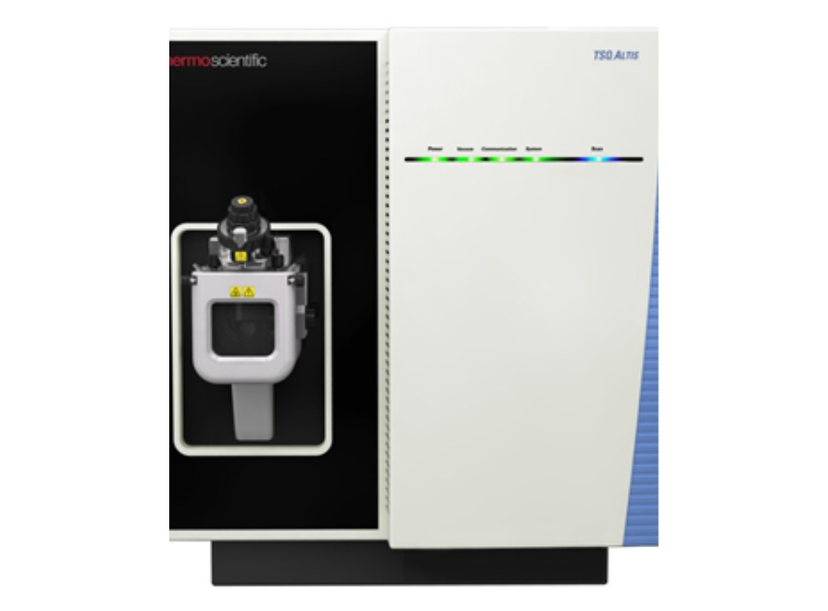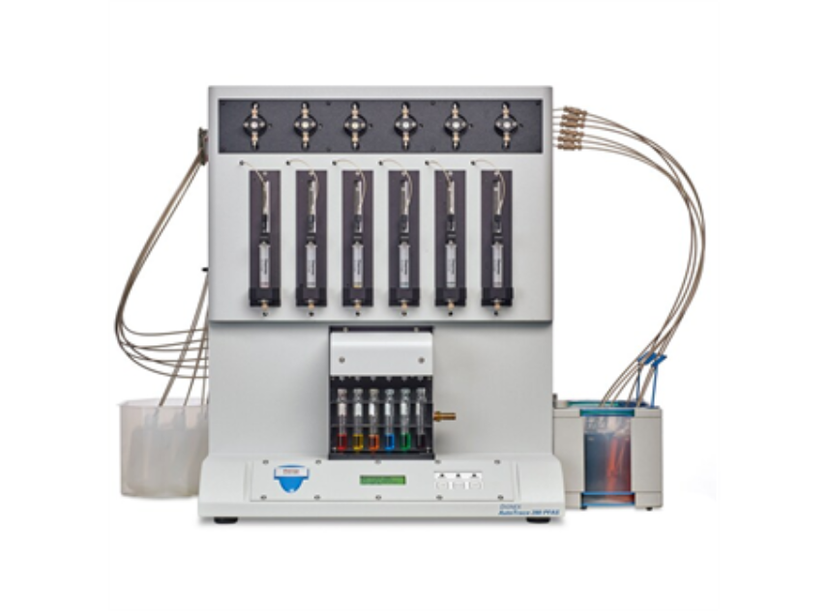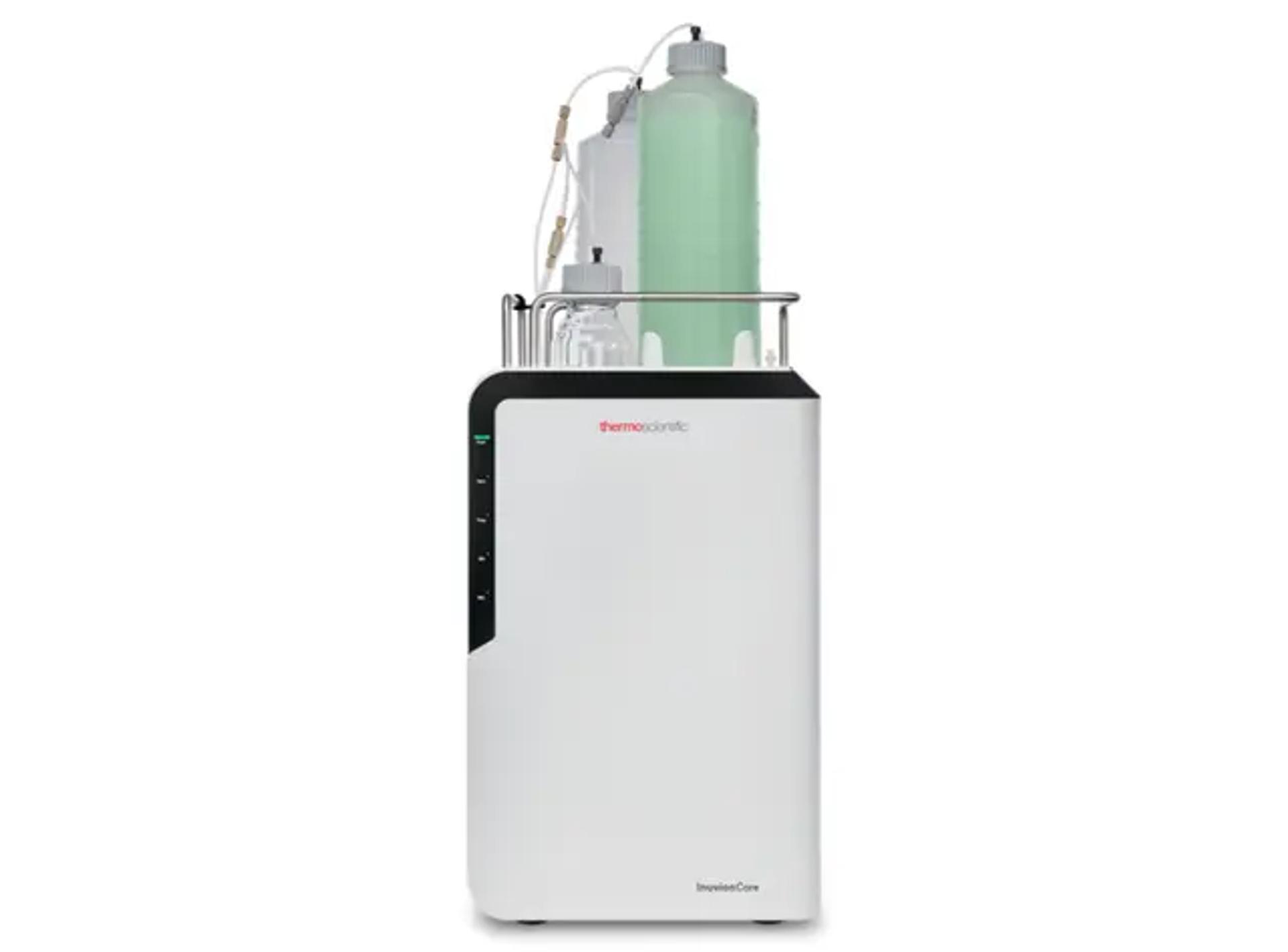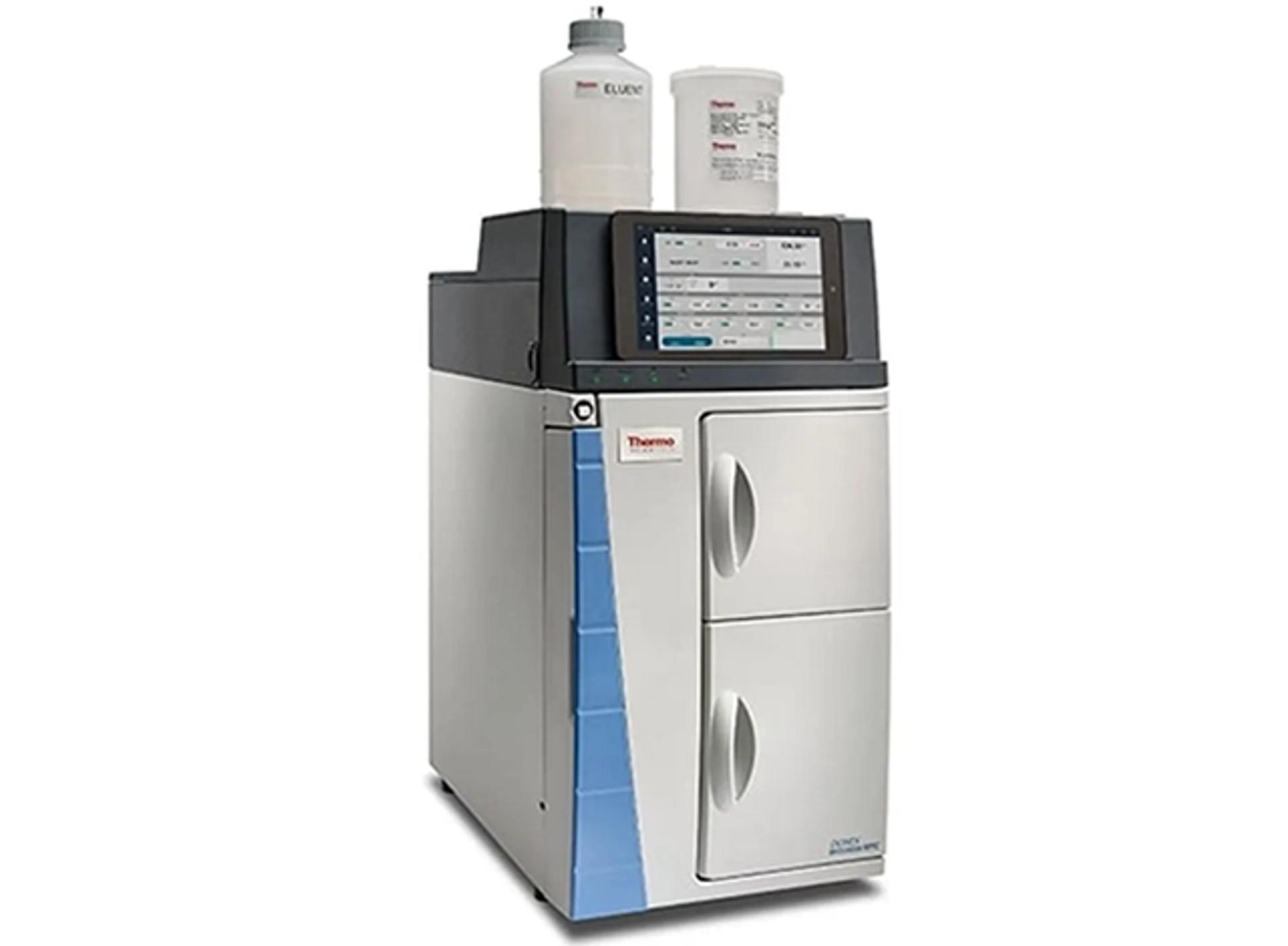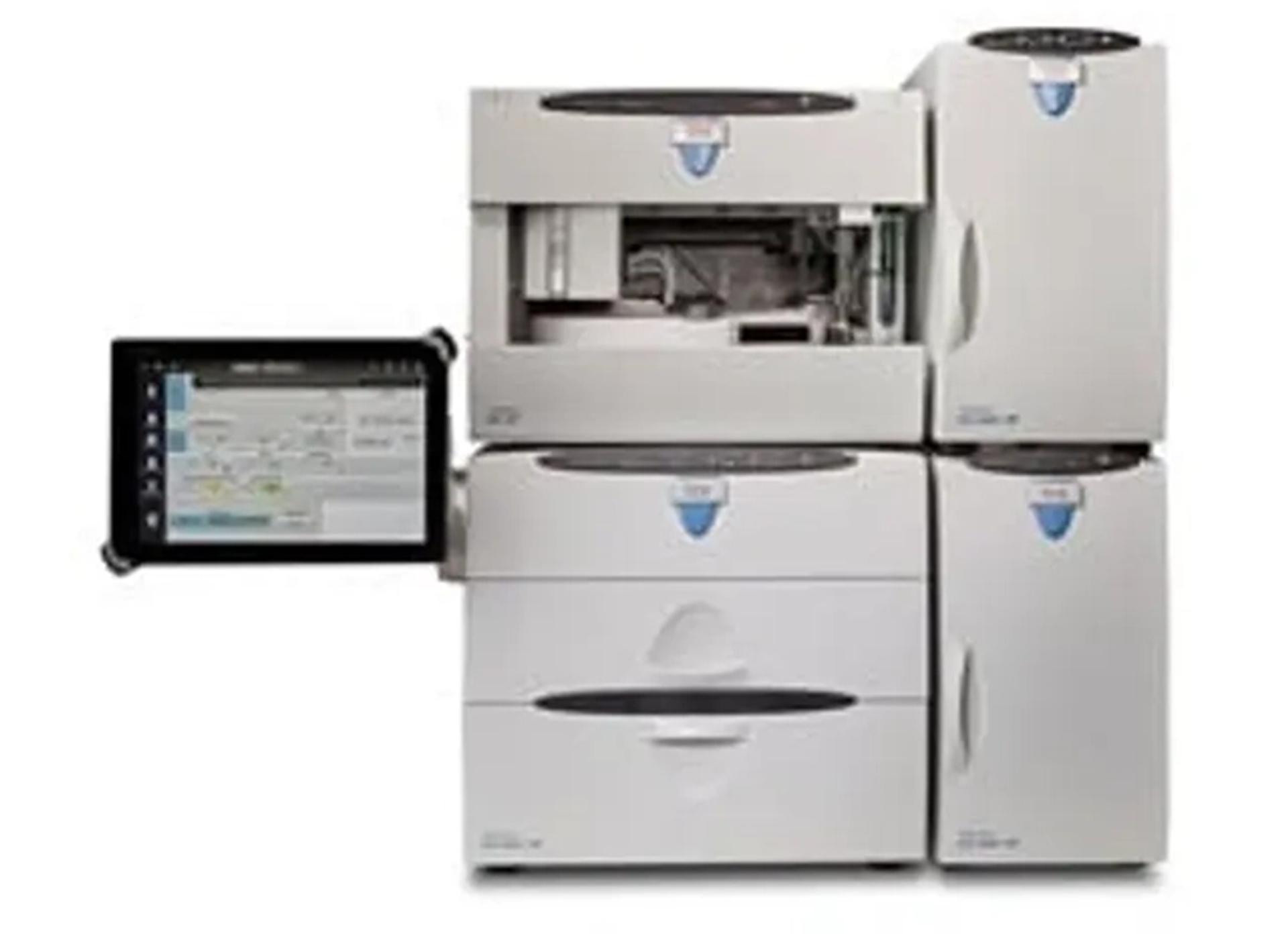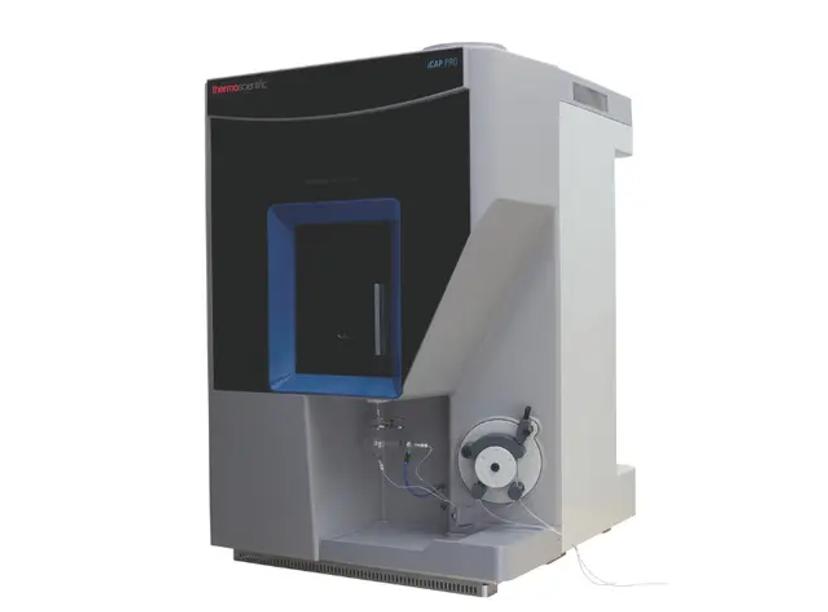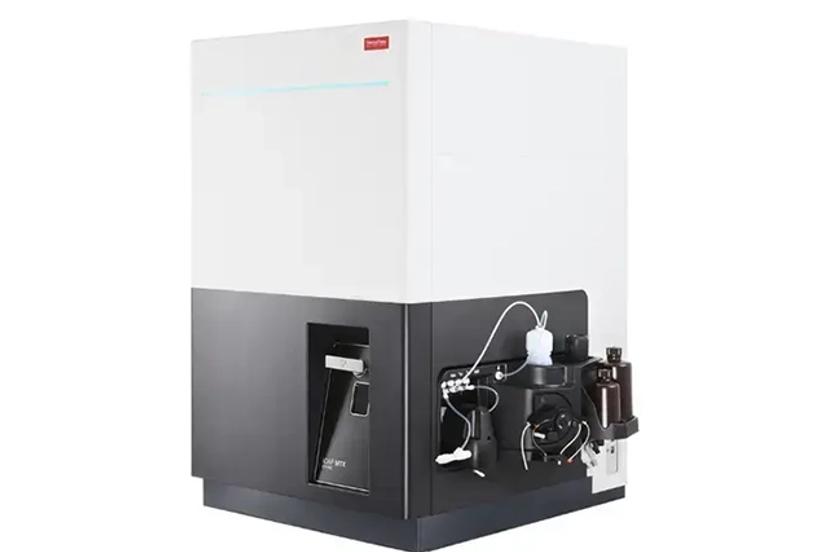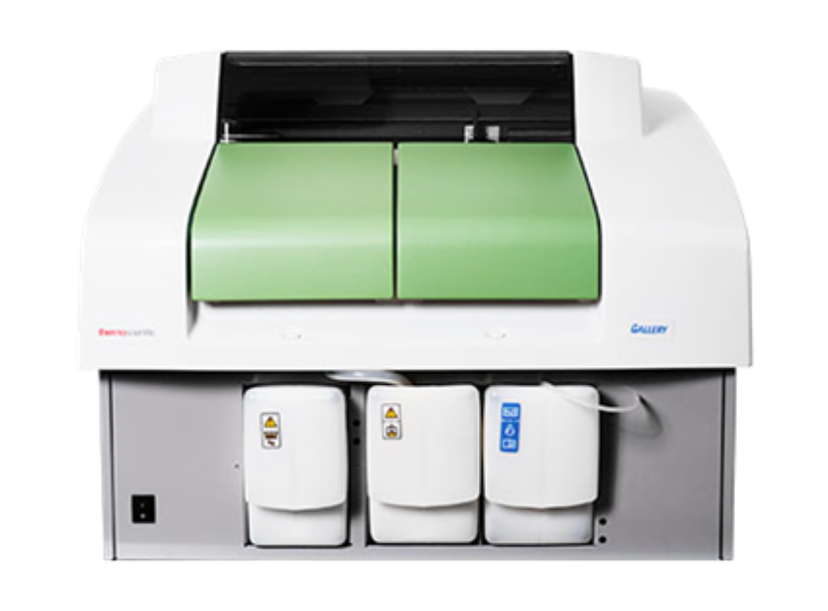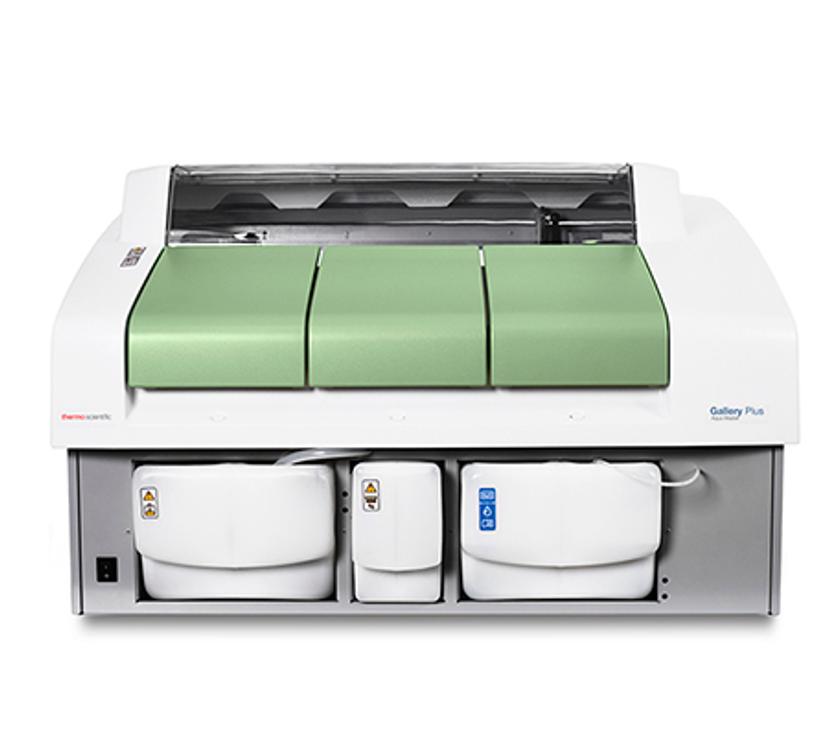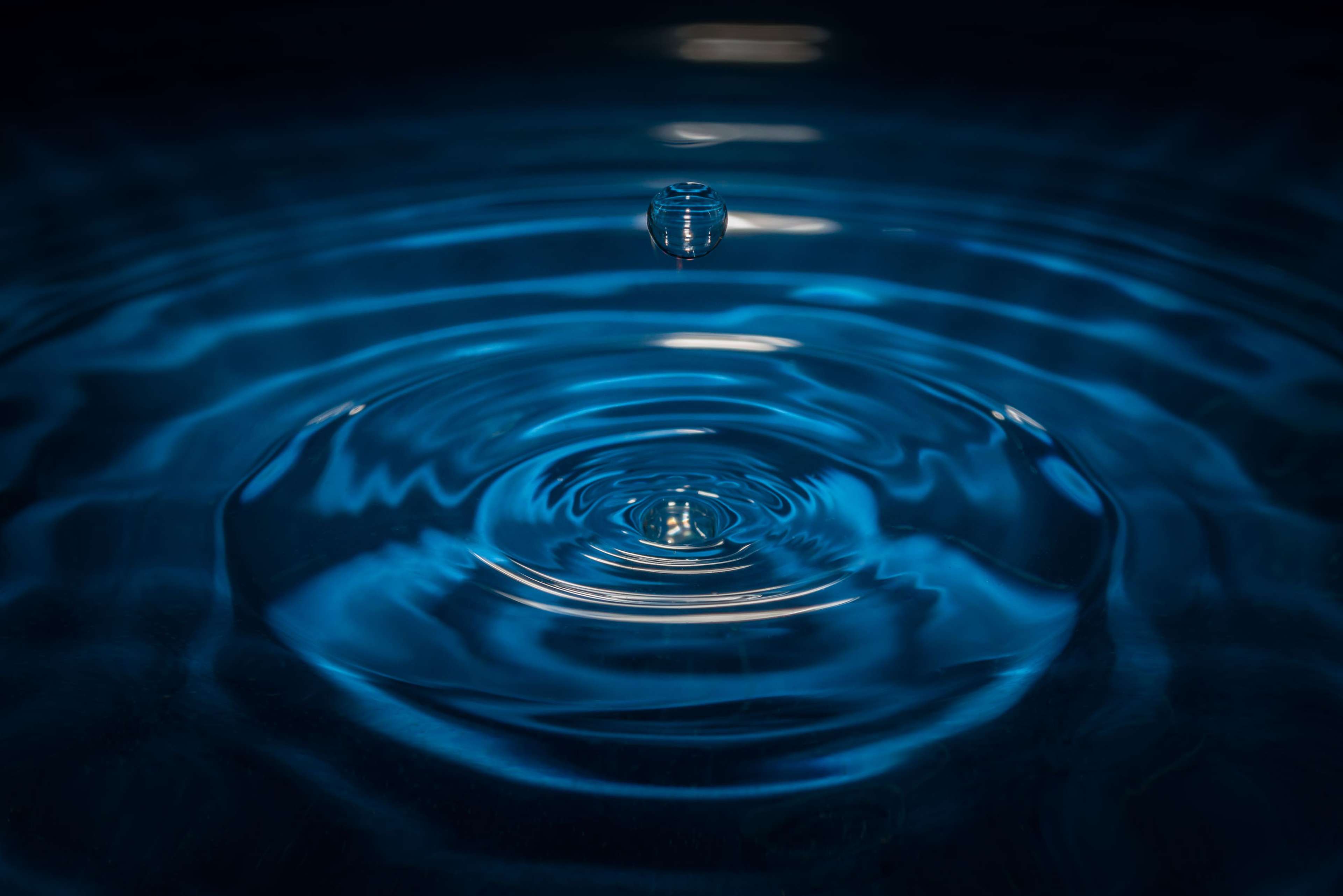
Water testing workflows to protect public health
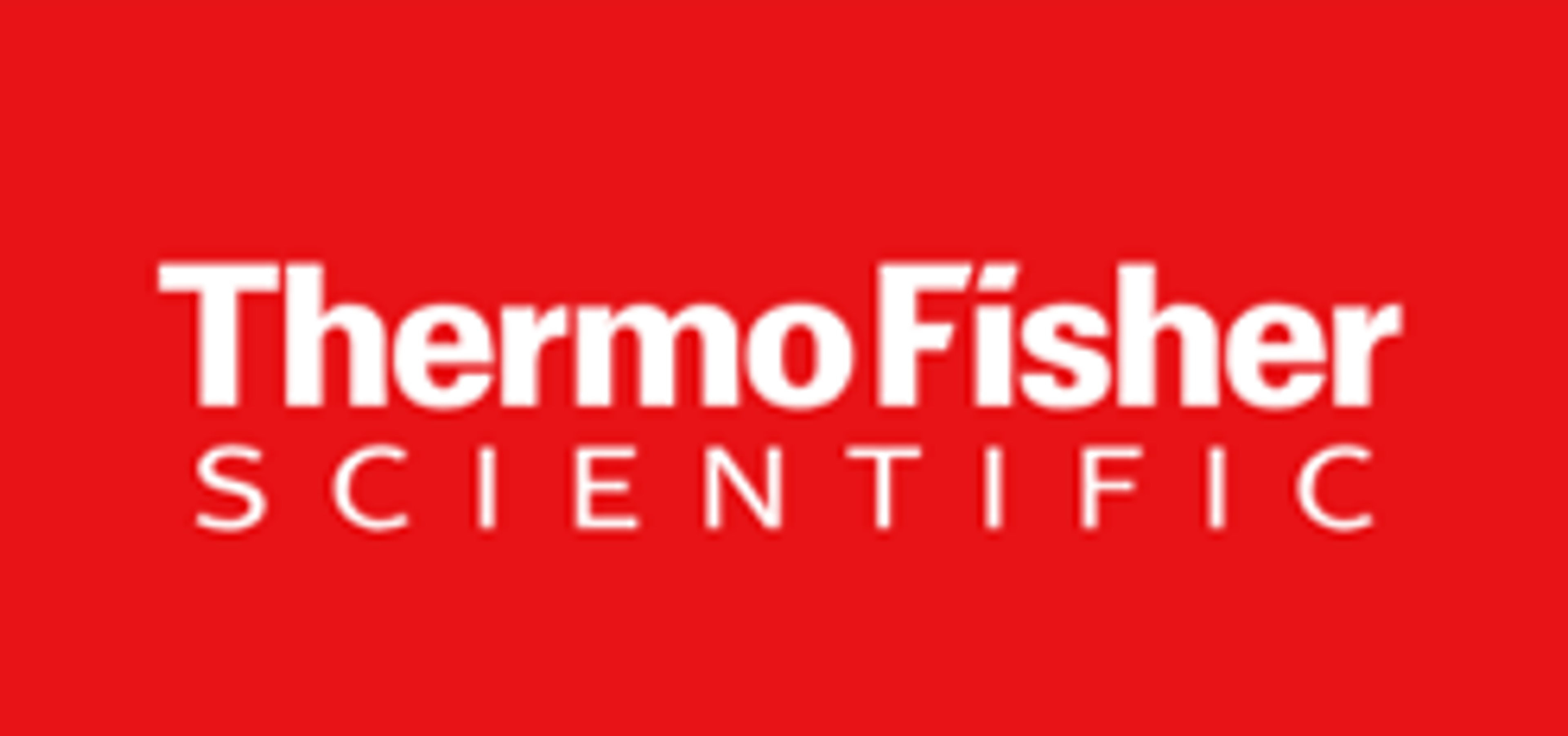
Everyone is impacted by the quality of water we consume. To ensure public safety, wastewater treatment plants and industrial facilities must comply with strict limits for wastewater pollutants, while the quality of surface and ground water must be rigorously assessed to ensure it is sufficiently treated before reaching our taps.
For water testing laboratories, assessing the quality and safety of water can present numerous challenges. These labs are tasked with delivering reliable and timely results for various applications, analyzing diverse water sources, and adhering to strict regulatory standards – all while controlling costs and minimizing downtime. Fortunately, with improvements in analytical instrumentation and methods, testing labs can become fully equipped to meet these demands. As a leader in this field, Thermo Fisher Scientific offers a comprehensive range of robust and easily implementable solutions that can enhance efficiency, reduce operational costs, and ensure accurate and compliant water testing.
On this page:
- Explore comprehensive workflows and services for water analysis
- View a selection of freely available resources, including webinars and application notes
- Discover how to obtain reliable, accurate, and precise results with advanced analytical technologies
- Learn how these solutions can help your compliance monitoring

Organic contaminants
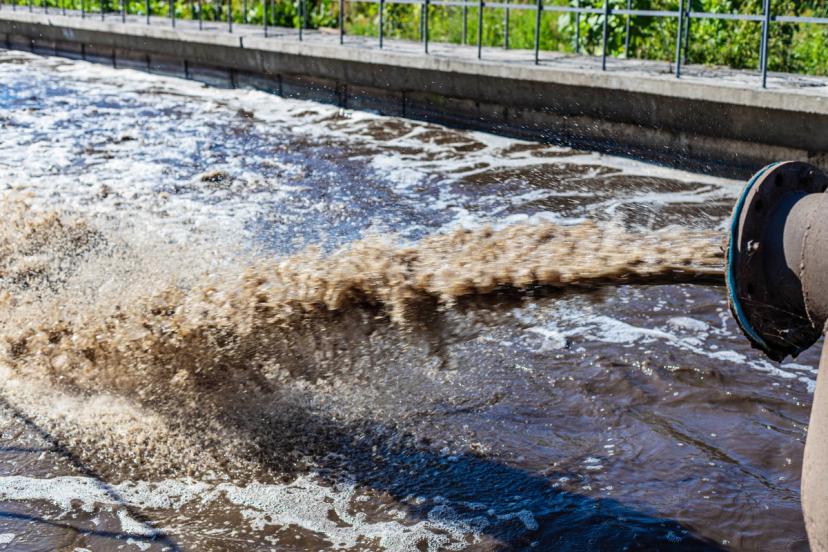
Organic contaminants – carbon-containing chemical substances that are derived from both natural and anthropogenic sources – are typically found in ground and surface waters posing significant risks to human health and the environment.
These contaminants encompass a wide range of compounds, which can be broadly categorized into three main types: volatile organic compounds (VOCs), semi-volatile organic compounds (SVOCs), and emerging organic compounds (EOCs). Regulatory authorities worldwide, such as the Safe Drinking Water Act (SDWA) in the USA and the European Water framework Directive 2008/105/EC, have established limits to control the maximum allowable levels of organic contaminants in drinking water, groundwater, surface water and wastewater.
Consequently, monitoring and analyzing these compounds is crucial for identifying and addressing potential contamination issues, guiding remediation efforts, and ensuring compliance with water quality regulations.
1. Volatile organic compounds
- Halogenated hydrocarbons
- Aromatics
- Solvents
2. Semi-volatile organic compounds
- Pesticides
- PCB
- PAH
- Chlorophenols
- PBDE
3. Emerging contaminants
- PFAS
- Microplastics
- POPs
- SCCP
Organic contaminants are diverse in structure and properties, making them difficult to analyze using a single analytical approach. For this reason, several analytical methodologies are used, with different types of sample preparation and instrumentation depending on volatility of the contaminants and the complexity of the sample matrices.
Thermo Fisher Scientific offers a range of gas chromatography (GC), gas chromatography-mass spectrometry (GC-MS) and liquid chromatography-mass spectrometry (LC-MS) workflow solutions for organic contaminants analysis, to cover all analytical needs from routine testing to deeper investigation of unknown emerging contaminants with high resolution accurate mass (HRAM) MS systems.
1. Volatile organic compounds (VOCs)
Various sample preparation methods are used to extract and concentrate VOCs in water prior to GC-MS analysis, including headspace, purge and trap, solid-phase microextraction, and liquid-liquid extraction. Purge and trap technology (P&T) is commonly utilized to achieve legal detection limits in compliance with local legislation on the maximum allowable content for volatile and very volatile organic compounds in water samples, especially for drinking water, due to stringent regulatory requirements. However, when dealing with more complex matrices, headspace analysis offers a much cleaner approach compared to purging the sample. With improvements in headspace extraction/enrichment techniques, such as in-tube extraction (ITEX), it is now possible to achieve low detection limits for volatiles with a clean sampling approach, without a purging step. ITEX can be a valuable alternative to classical enrichment techniques offering several benefits in terms of ease of use and robustness.
Purge and trap workflow
According to the U.S. EPA guidelines, the common instrumental approach for the analysis of VOCs in water at trace levels is gas chromatography coupled to single quadrupole MS combined with P&T sampling. Thermo Fisher Scientific has developed several VOC analysis workflows that combine the Thermo Scientific™ ISQ™ 7610 MS system and Thermo Scientific™ TRACE™ 1610 gas chromatograph (GC) with Teledyne Tekmar P&T concentrators for robust, compliant analysis. When used in combination with the Thermo Scientific™ HeSaver-H2Safer™ technology, a significant reduction of the helium carrier gas consumption is achieved, relieving the laboratories from the pressures of the helium gas shortage and cost increase while maintaining full compliance with EPA requirements.
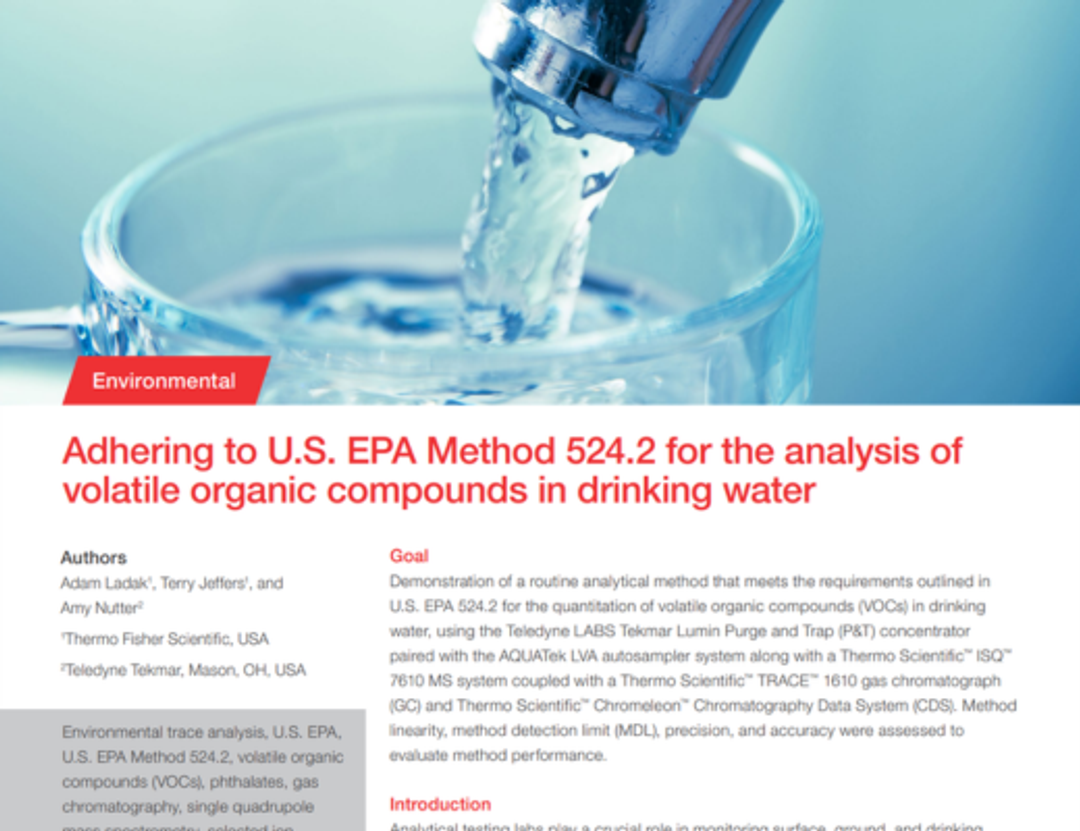

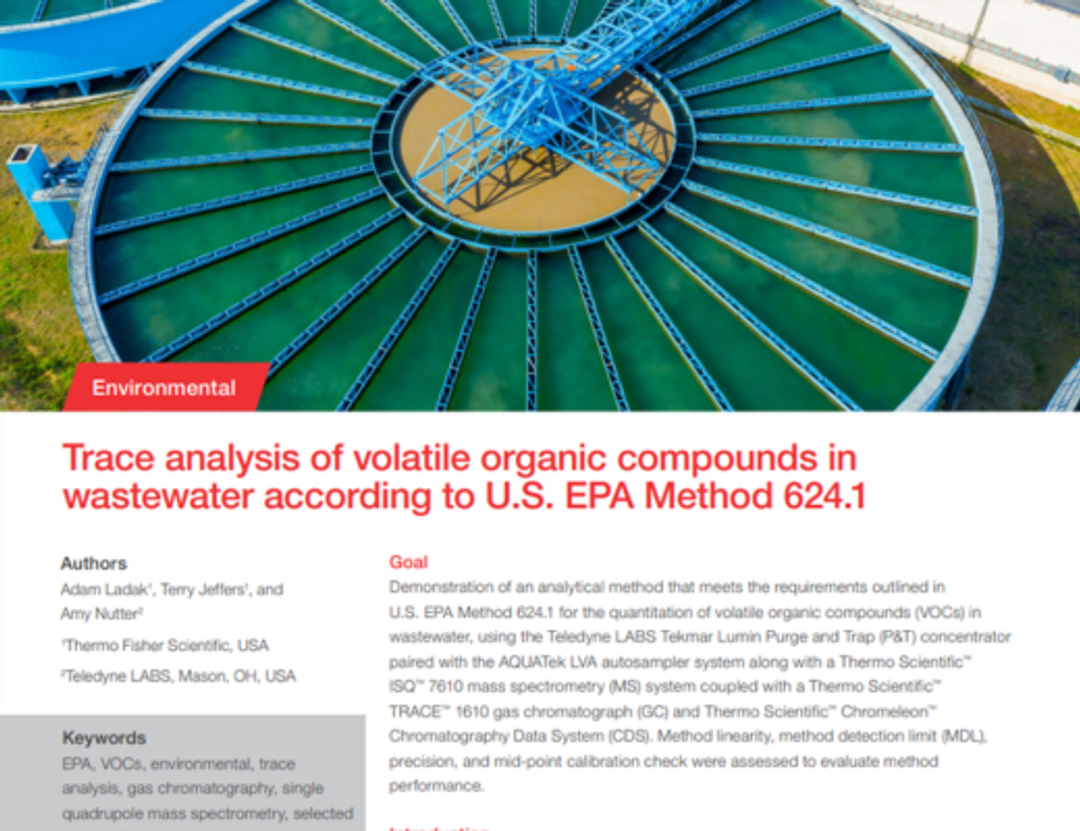

Amy Nutter, VOC Applications Chemist at Teledyne Tekmar, delves into purge and trap analysis of U.S. EPA 524.2 and Chinese MEE HJ 605 methods. Nutter explores the theory, method requirements, instrument features, and results for VOC analysis in water and soil samples. Nutter highlights the efficiency and time-saving benefits of the ISQ 7610 Single Quadrupole GC-MS System.
Watch videoIn-tube extraction dynamic headspace (ITEX-DHS) workflow
ITEX-DHS offers high sensitivity and selectivity for volatile compounds. It allows for the extraction of low concentrated analytes from complex matrices while minimizing interference from non-volatile matrix components. Additionally, the technique offers an automated and efficient sampling process through a robotic autosampler, making it suitable for unattended and time-sensitive analyses.
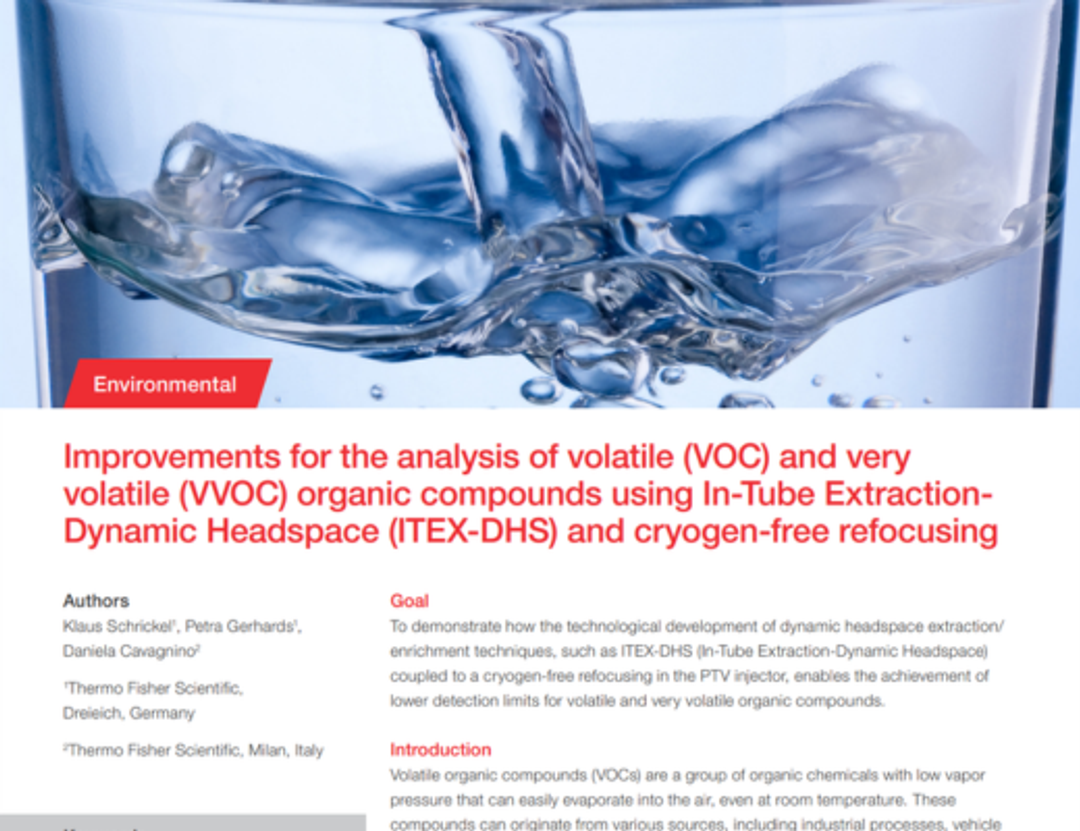
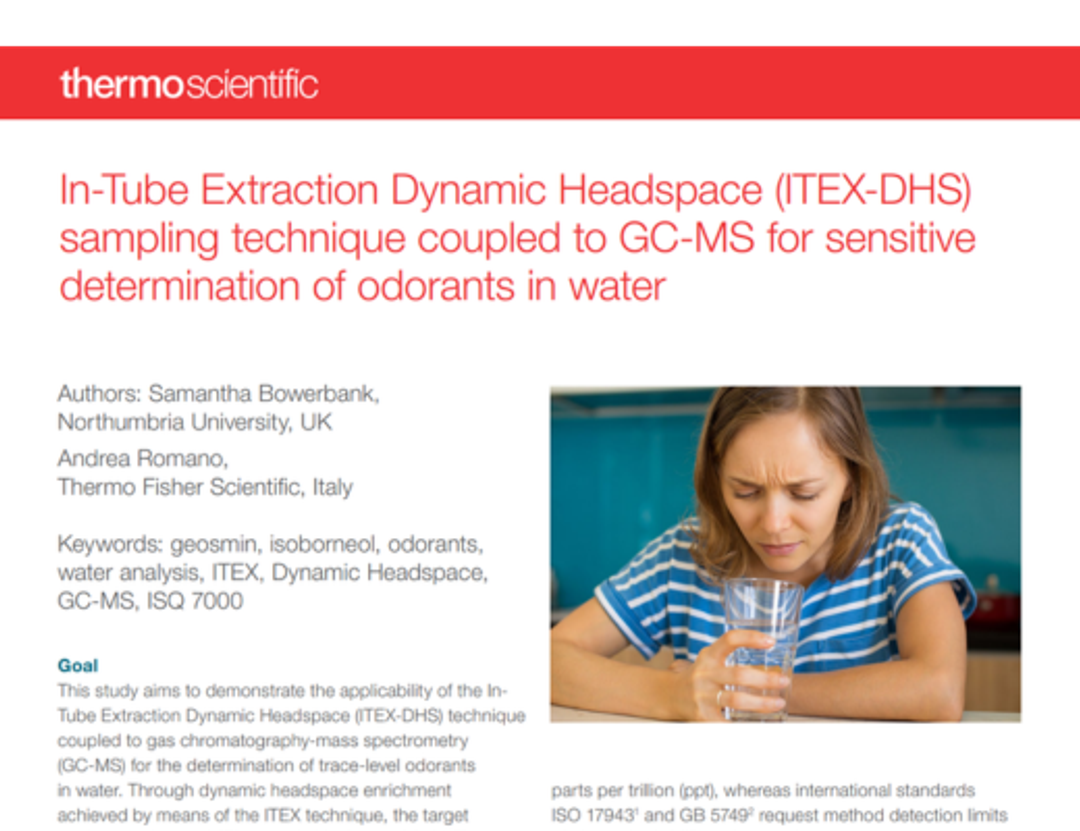
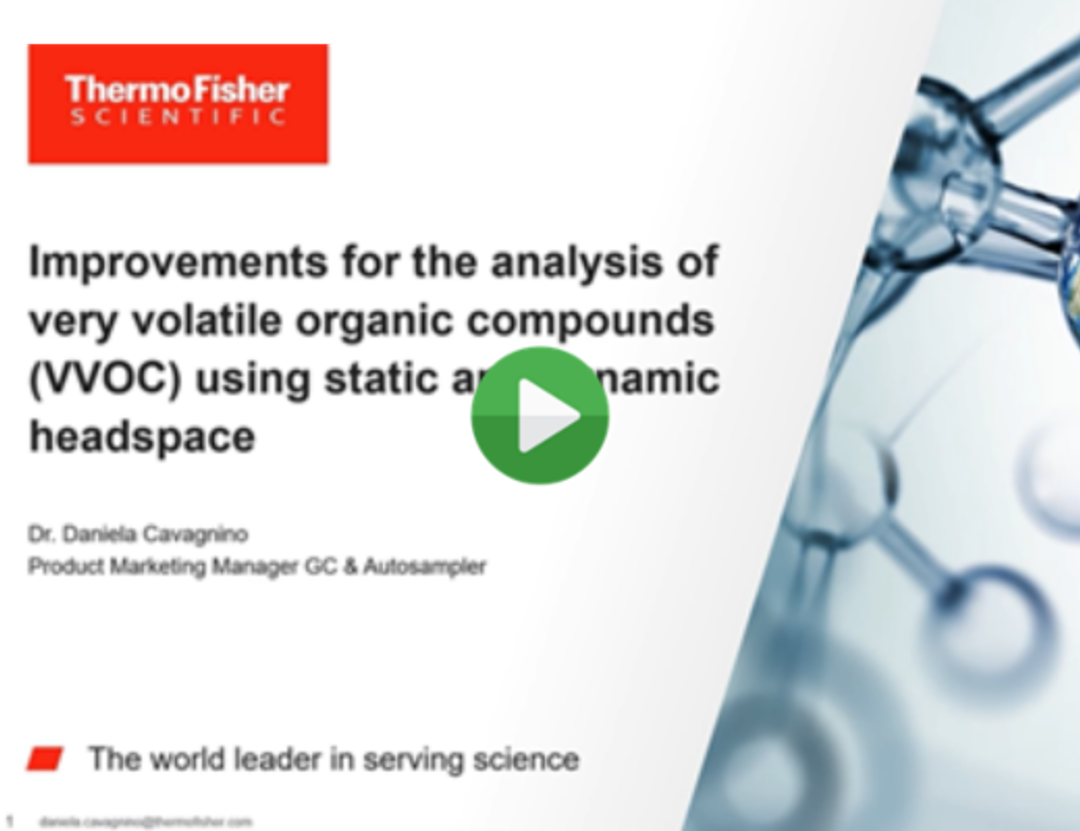
ISQ 7610 Single Quadrupole GC-MS System
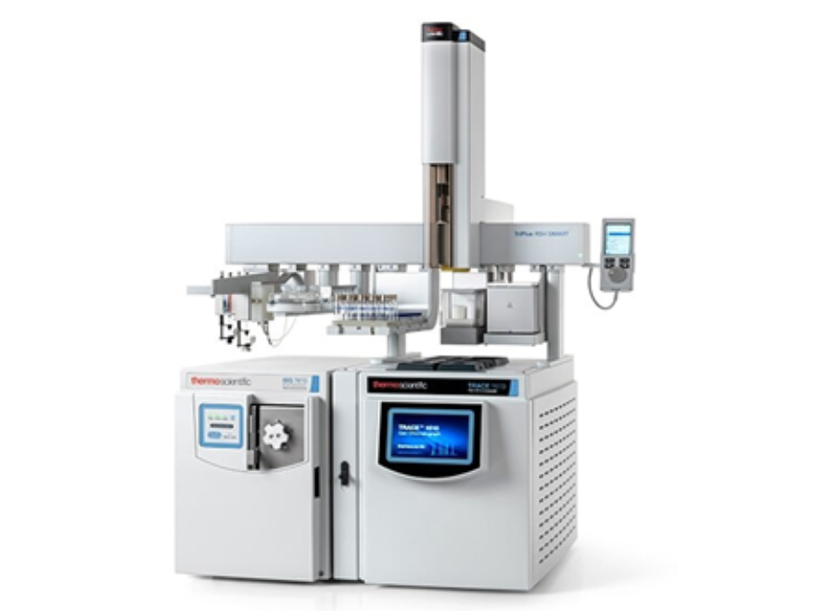
Developed to enhance user experience in their workflows, the ISQ 7610 GC-MS system is streamlined to ensure great data consistency over time while offering automated instrument control tools.
View productRequest quoteTRACE 1600 Series Gas Chromatograph
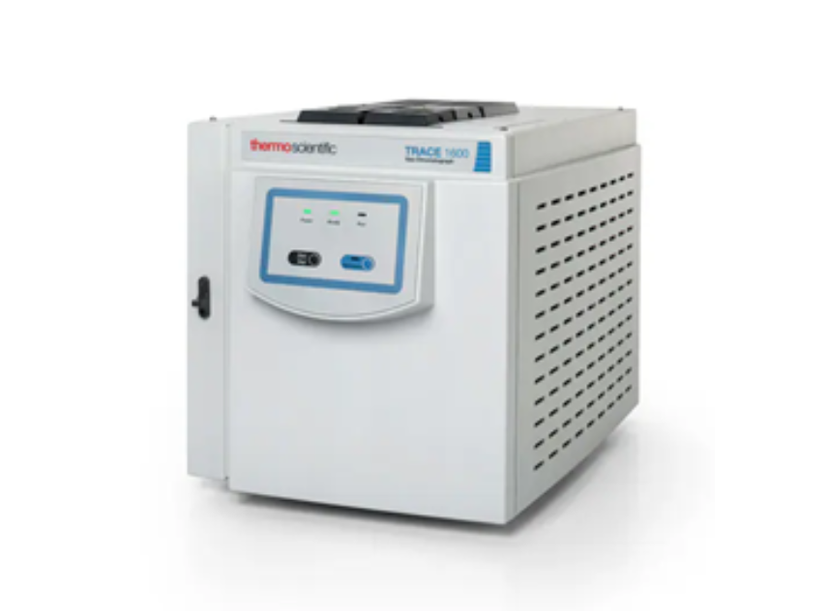
Engineered with the customer in mind, the unique modular design of the TRACE 1600 Series GC offers a full line of interchangeable injector and detector modules for flexible configurations, elevating efficiency and reducing cost of ownership.
View productRequest quote2. Semi volatile organic compounds (SVOCs)
Solvent extraction followed by GC-MS/MS analysis is the method of choice for quantifying SVOCs such as pesticides, polychlorinated biphenyls (PCBs), polycyclic aromatic hydrocarbons (PAHs) and phenols in water samples. The analysis of the different classes of SVOC compounds typically require dedicated methods, increasing the number of analysis per sample, reducing the sample throughput. Additionally, manual sample preparation procedures like solvent extraction or solid phase extraction (SPE) are also time-consuming, presenting a bottleneck for most analytical laboratories.
Fortunately, advances in MS and autosampler technology have brought solutions to these challenges, enabling methods consolidation to cover multiple classes of SVOCs in a single analysis. Powerful triple quadrupole mass spectrometry can be used to modernize existing workflows, allowing labs to reduce their need for instrument-specific consumables and components on-hand and to reduce costs and complexity. Additionally, it is now possible to automate procedures like liquid–liquid extraction (LLE), using state-of-the-art Thermo Scientific™ TriPlus™ RSH SMART autosampler technology.
Consolidated methods for micropollutants
Using a single configuration for multiple analyses offers several advantages, including reducing operation costs by minimizing training needs and centralizing consumables, enabling quick setup, and increasing instrument capacity by allowing all systems to run all methods.
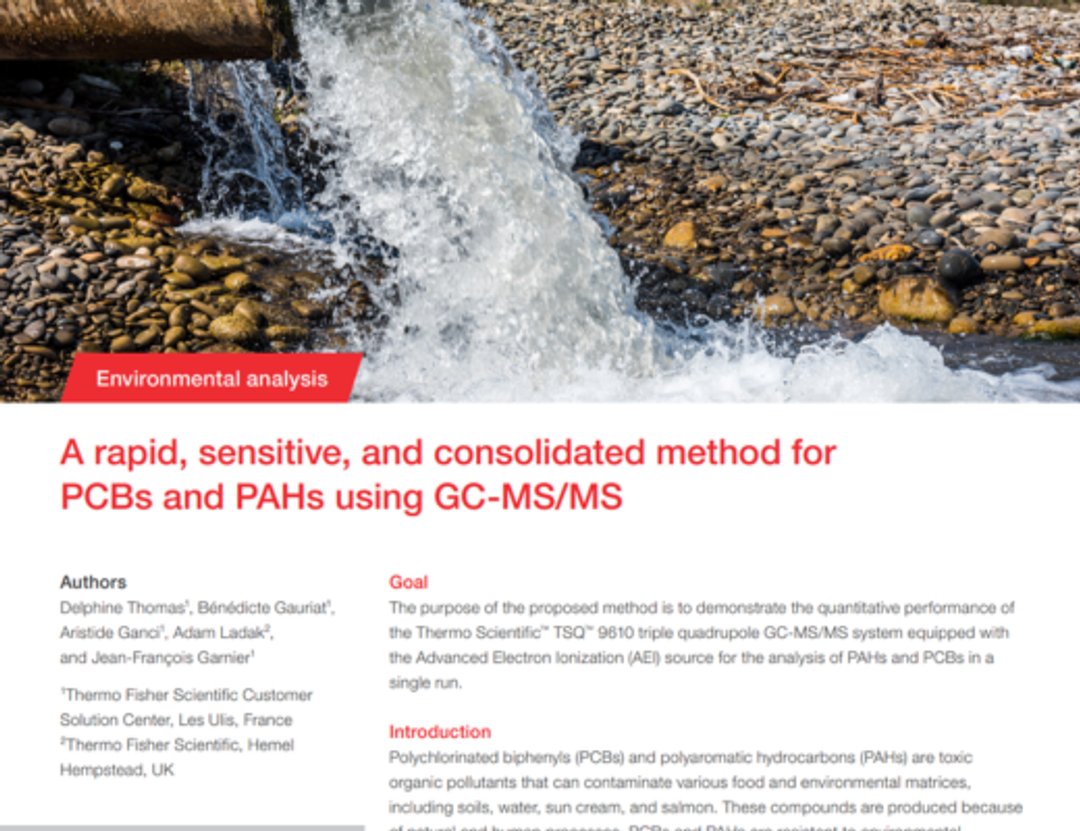
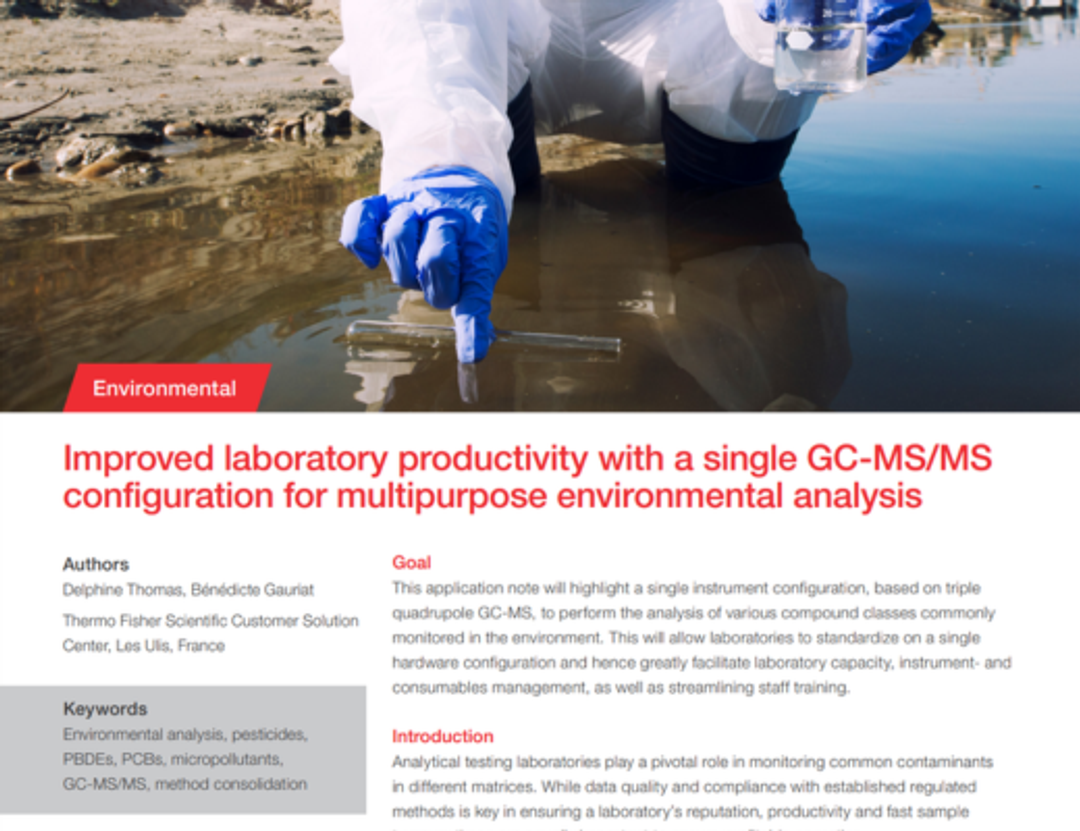

Thermo Scientific™ TSQ™ 9610 GC Triple Quadrupole Mass Spectrometer for EPA 8270

This video highlights the successful collaboration between Bureau Veritas and Thermo Fisher Scientific, focusing on environmental analysis. The TSQ 9610 GC Triple Quadrupole Mass Spectrometer, with its high sensitivity and unique features, has significantly improved analysis process and customer satisfaction.
Watch videoAutomated LLE and DLLME
By deploying the TriPlus RSH SMART autosampler, labs can automate all the manual extraction steps technicians would otherwise perform, saving time and reducing variability. The autosampler also allows labs to substantially reduce required sample and solvent volumes, curtailing costs and staff exposure to concerning substances.
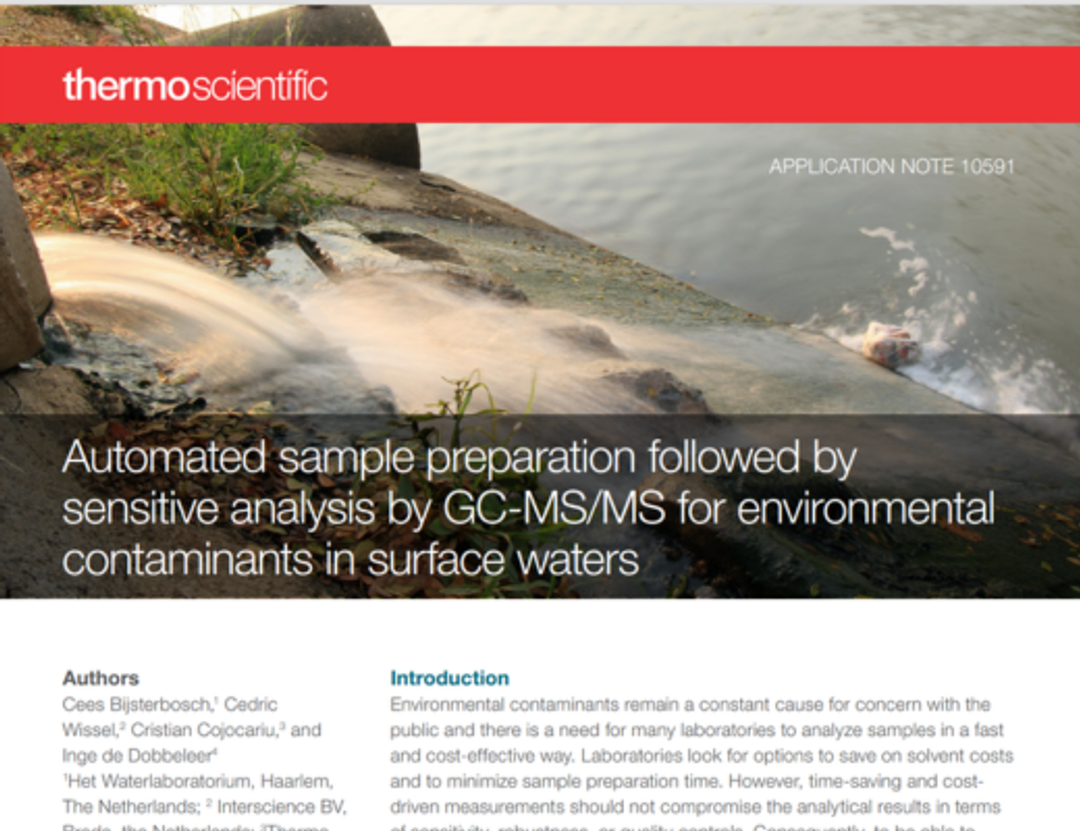
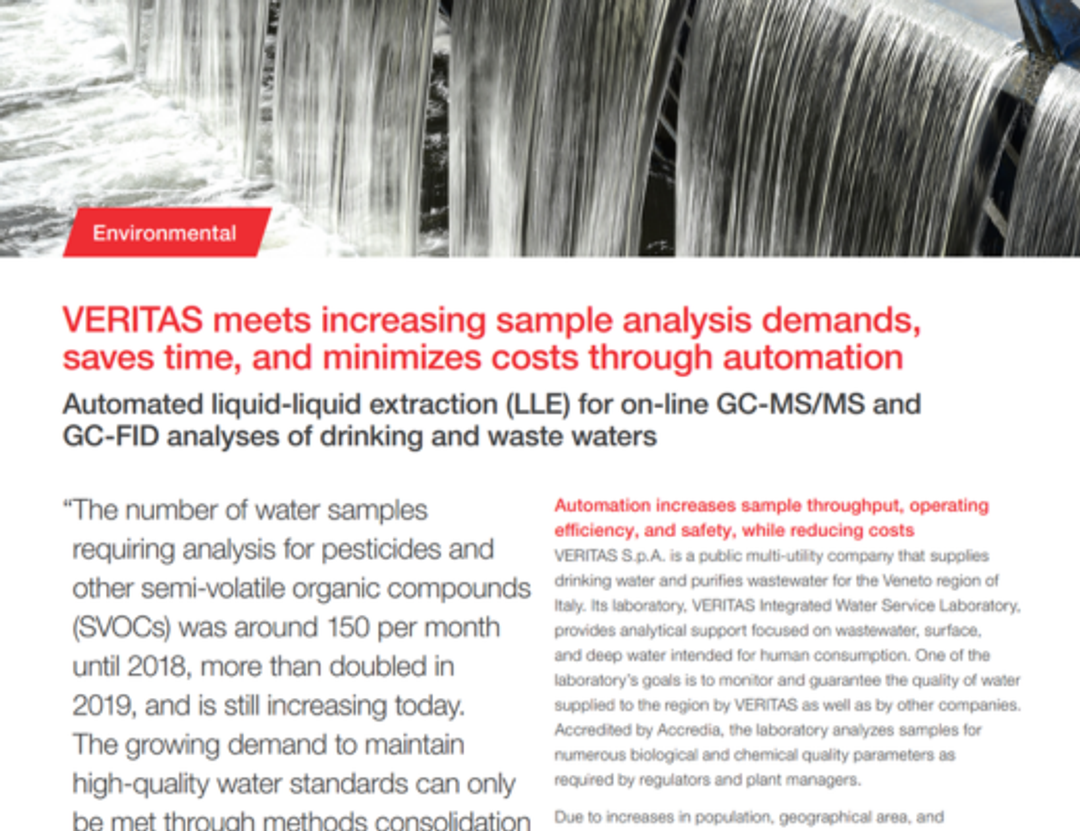

TriPlus RSH SMART Autosampler

Expand automated sampling capabilities for GC and GC-MS beyond liquid, headspace, and solid phase microextraction (SPME) injections.
View productRequest quote3. Emerging contaminants
In a rapidly evolving regulatory environment with increasing concerns surrounding emerging contaminants such as PFAS (per- and polyfluoroalkyl substances) and microplastics contamination, analytical testing laboratories face significant challenges in achieving accurate detection and quantification. As a result, investing in cost-effective, advanced analytical instrumentation has never been more important. To help labs meet these demands, Thermo Fisher Scientific has developed validated workflows to meet both regulated and non-targeted analysis testing needs for water samples.
Reveal emerging contaminants through GC-HRAM
Explore how gas chromatography (GC) coupled with high resolution accurate mass spectrometry (HRAM), using the Thermo Scientific™ Orbitrap Exploris™ GC Mass Spectrometer, provides a means for the rapid detection and identification of emerging contaminants, or even unknowns, in water.
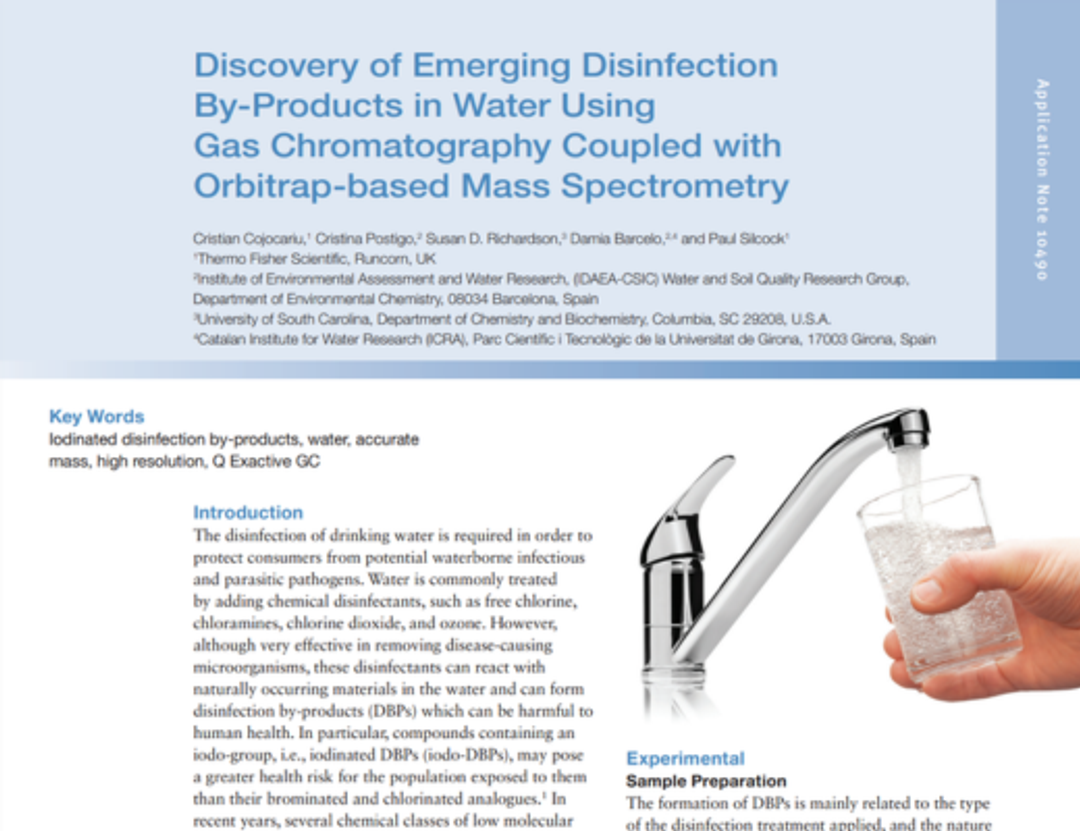
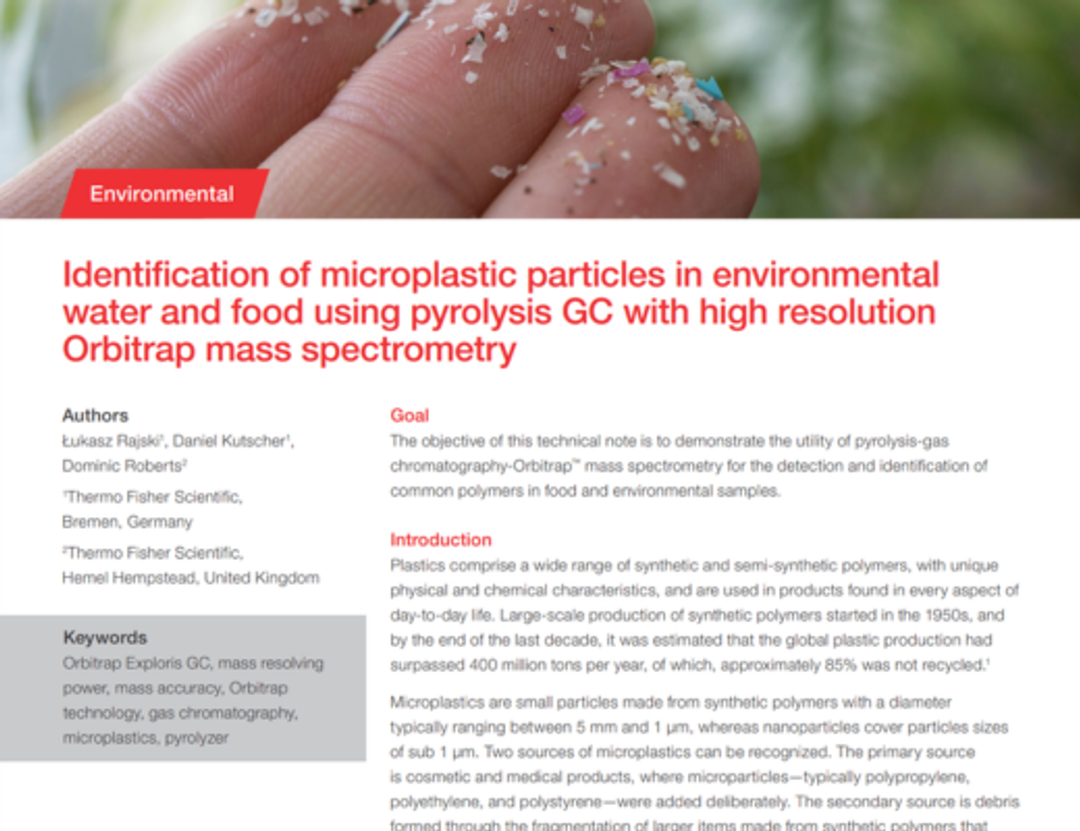

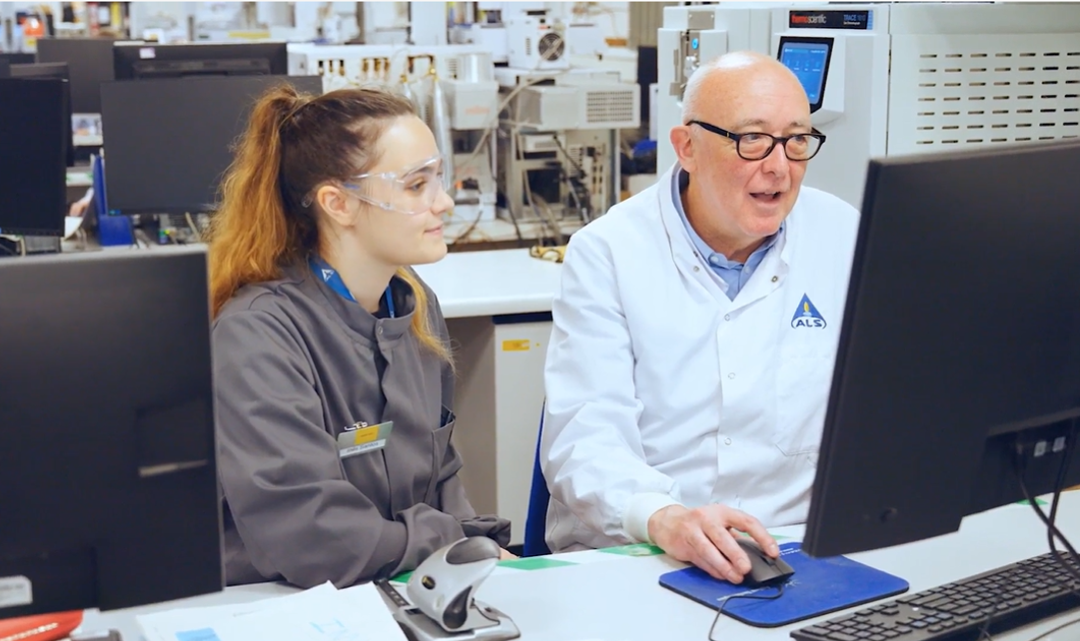
Join John Quick, Principal Scientist at ALS Environmental Services Ltd, as he explores how the Orbitrap Exploris GC is essential for achieving low detection limits in complex matrices.
Watch videoUntargeted PFAS through LC-HRAM
See how a fusion of the most prominent untargeted PFAS analysis techniques can be leveraged within a single workflow using Compound Discoverer software. Plus, learn how a connected hardware and software ecosystem can help ensure success when meeting the evolving needs for PFAS data analysis.
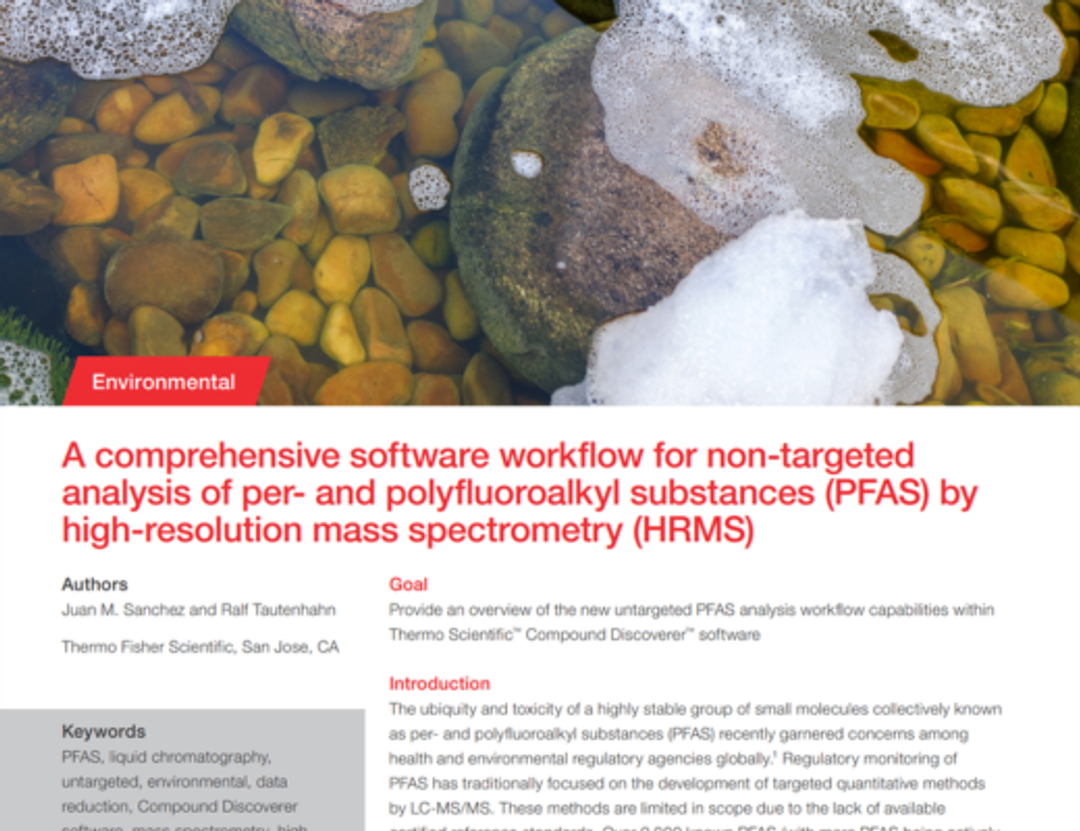
Over 9,000 known PFAS, with more being actively discovered, dictate the need for a comprehensive non-targeted analysis of PFAS by HRMS. Thermo Fisher Scientific presents a fusion of the most prominent untargeted PFAS analysis techniques leveraged within a single workflow using Compound Discoverer software as a turnkey solution. Discover how a range of onboard visualization tools alongside other innovative features enables a simplified approach for analyzing this concerning class of small molecules.
Download application note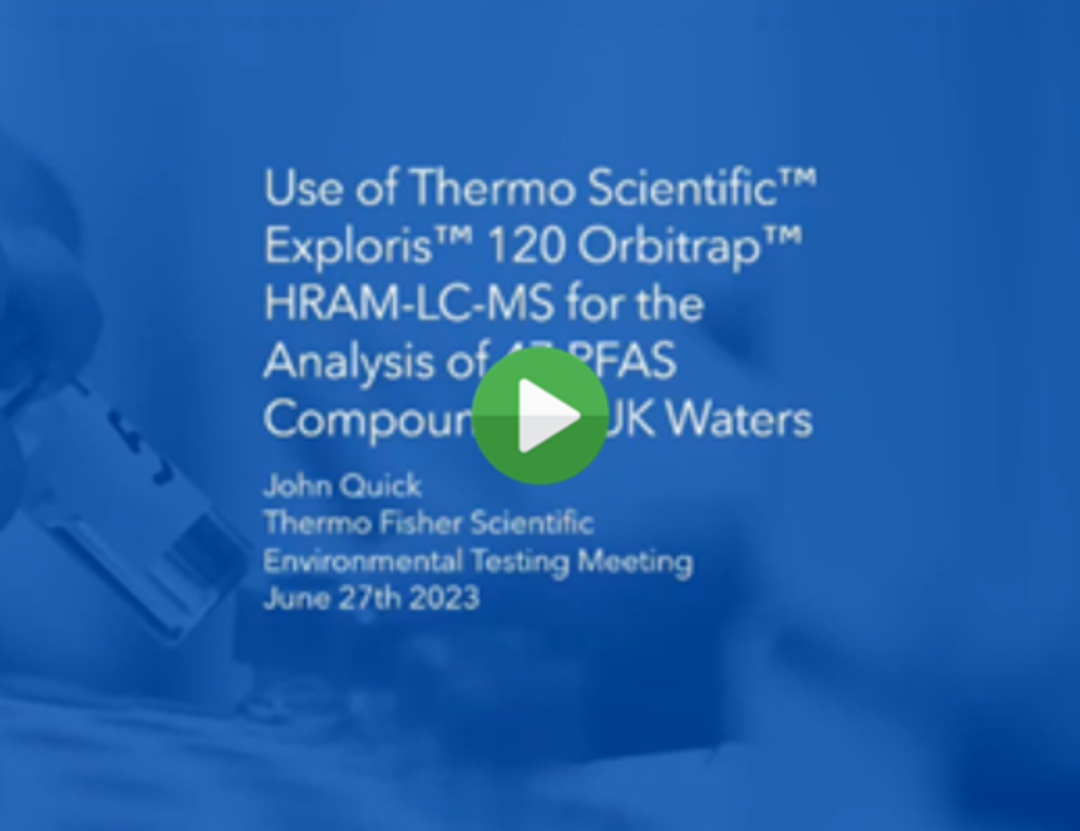
John Quick from ALS Environmental introduces a method designed using high-resolution mass spectrometry (MS) on the LC orbitrap system for studying 47 PFAS compounds in UK waters. Quick discusses his team's methodology using the Thermo Scientific™ Orbitrap™ Exploris™ 120, presenting an extraction method based on EPA 1633, and achieving limits of detection of <1ng/L for all compounds with good precision and bias. See how high-resolution MS provides scope for advancement in targeted and untargeted PFAS screening methods.
Watch webinarTargeted PFAS through LC-MS/MS
Discover an LC-MS/MS method for the analysis of 54 PFAS compounds in drinking water using direct injection. Plus, learn how the Thermo Scientific™ TSQ Altis™ triple quadrupole mass spectrometer can quantitate the majority of PFAS compounds five times lower than LLOQ reporting requirements in ASTM D7979-17 and EPA 8327 in non-drinking water matrices.

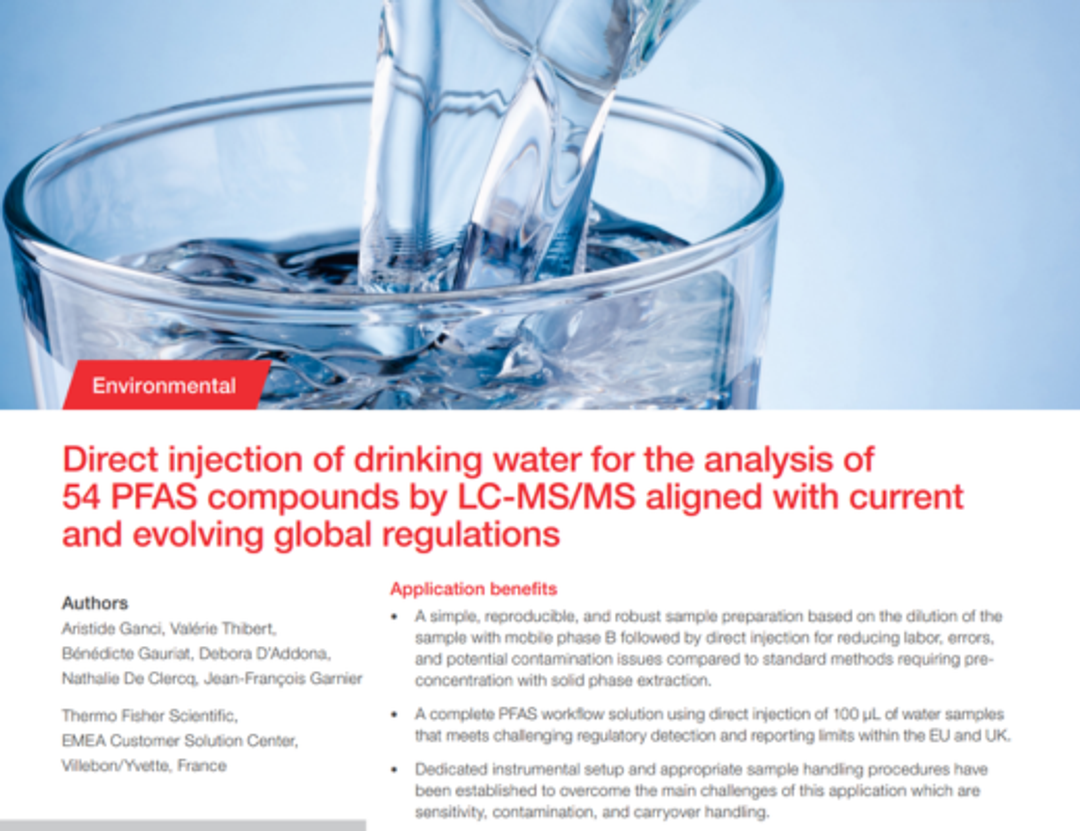
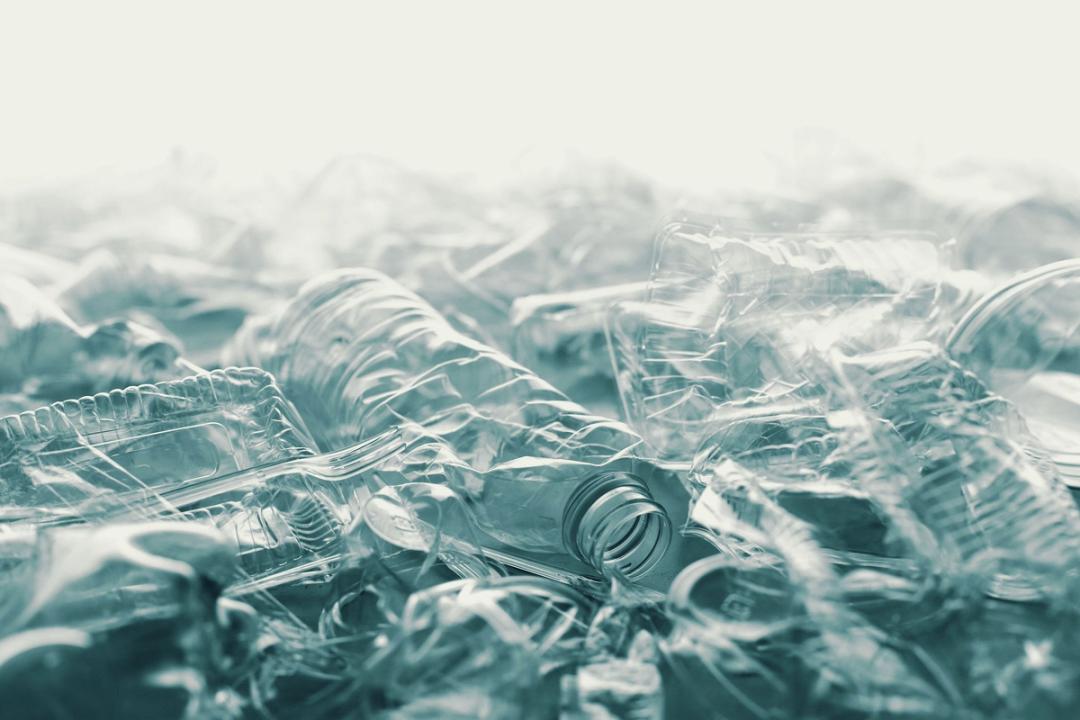

Anions/cations/polar contaminants
Ion chromatography (IC) is a well-accepted technique for monitoring ionic contaminants in water, including surface, ground, drinking, and wastewaters. The most widely used IC methods are U.S. EPA Methods 300.0 and 300.1 Part A, which are required for compliance monitoring of inorganic ions as part of the Clean Water and Safe Drinking Water Acts. With the latest innovations in IC instrumentation, column and consumable chemistry, and automation, testing labs can greatly simply IC applications, improve their ease-of-use, and reduce costs. Learn how, in the resources below.
1. Anions & cations
Discover how the compact Thermo Scientific™ Dionex™ Inuvion™ IC system coupled to the Thermo Scientific™ Dionex™ AS-DV autosampler can provide a fast and economical choice for routine determination of anion and cation contaminants in drinking water.


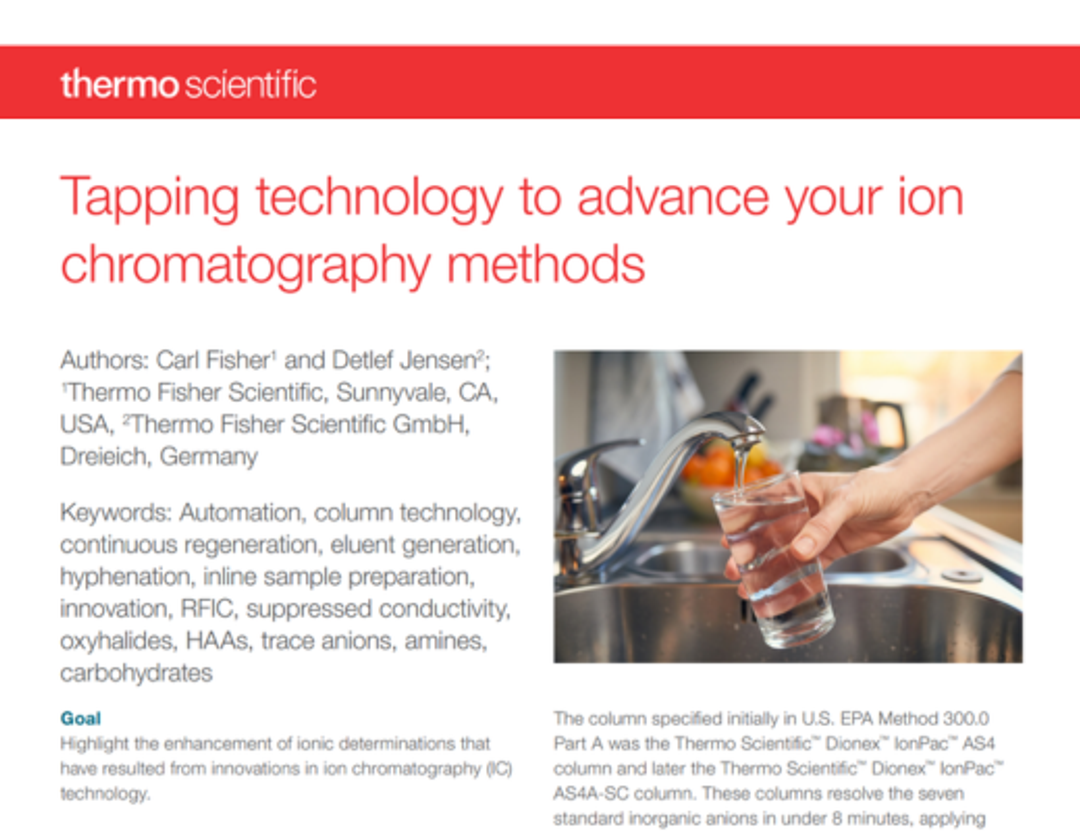
2. Polar disinfection byproducts
Chemical treatment processes can introduce byproducts into drinking water including chlorinated halogenated acids (HAAs), bromate, and dalapon, among others. See how the quantitation of these compounds via IC-MS offers a robust, reliable, reproducible method that requires no sample preparation, allowing significant time and cost savings.
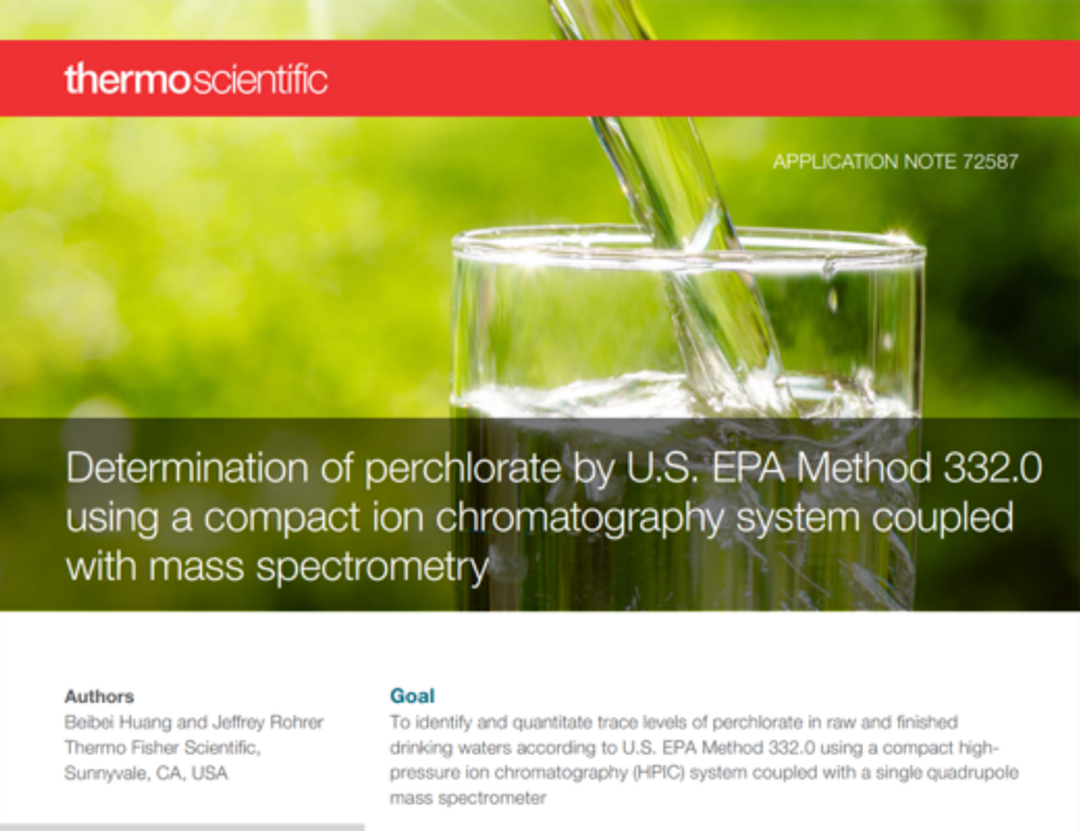
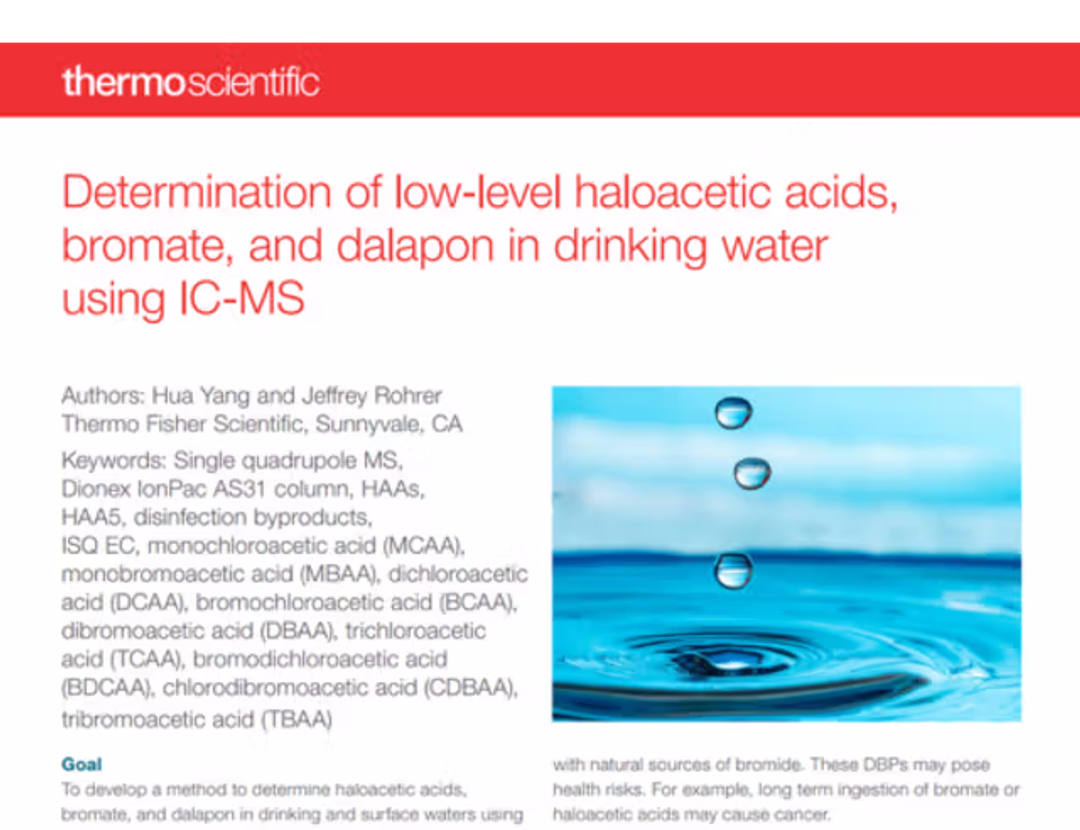
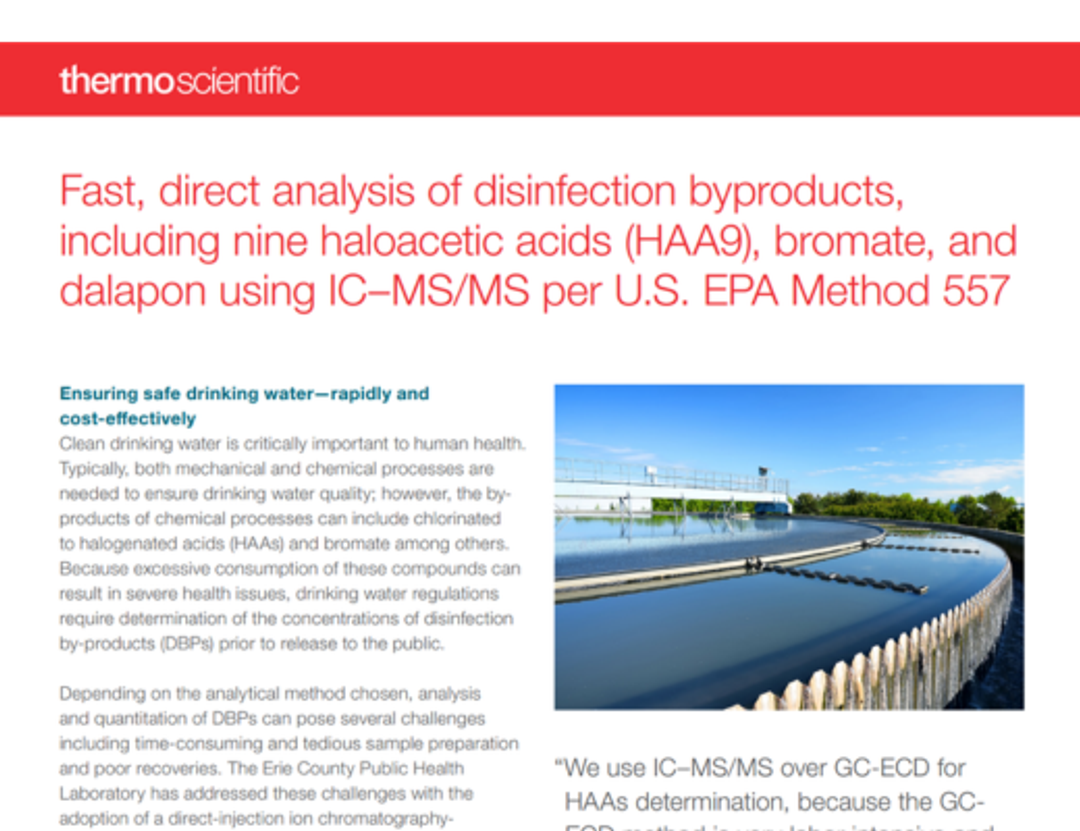

Metals contaminants
The U.S. EPA requires specific analytical methods to be used for metals analysis in compliance with drinking water and solid waste regulations. For instance, for drinking water, the EPA methods 200.5 (Axial ICP-OES), 200.7 (ICP-OES), 200.8 (ICP-MS), and 200.9 (GFAA) are mandatorily used for different metals. For solid waste, SW846 methods 6010c (ICP-OES), 6020 (ICP-MS), and 6020A (ICP-MS) are used for metals analysis for groundwater, sludges, soil, and solid waste as a performance guidance. Thermo Fisher Scientific offers both ICP-OES and ICP-MS solutions for trace elemental analysis that can meet and exceed the detection and quality control requirements of these methods.
1. Drinking, ground, and surface water
Learn how the Thermo Scientific™ iCAP™ MX Series ICP-MS and iCAP™ PRO Series ICP-OES systems enable the fast, sensitive, and robust analysis of major and trace elements in various water samples types – primarily ground waters, surface waters and drinking water.
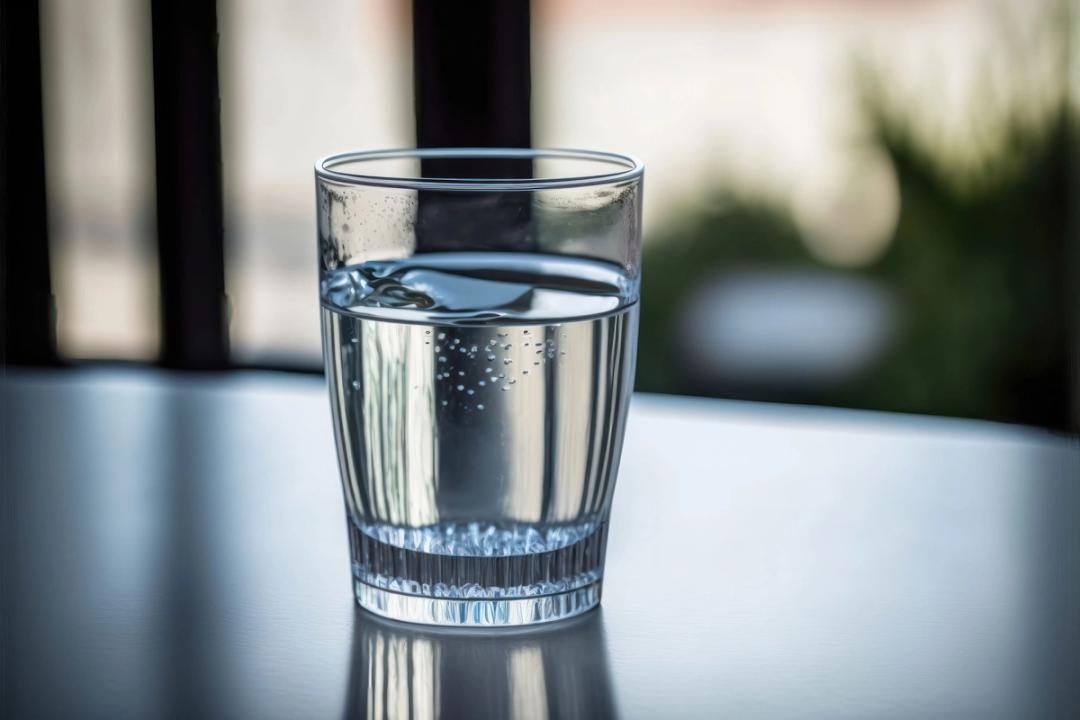
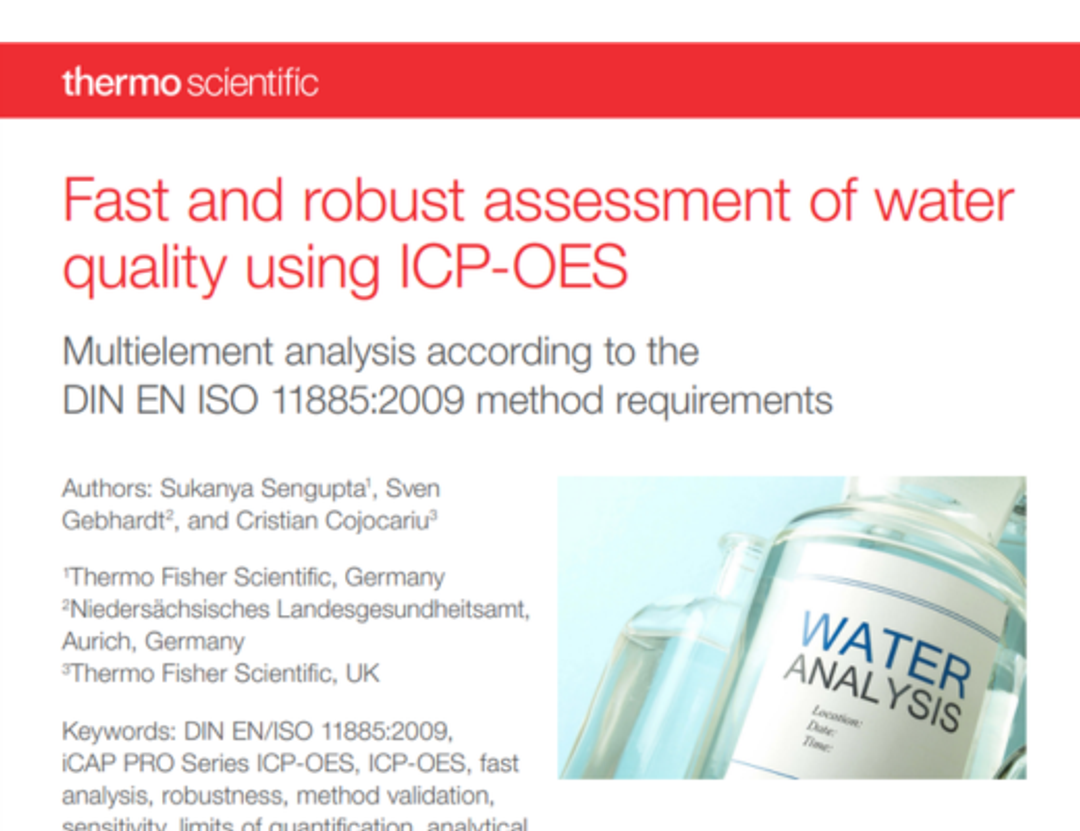
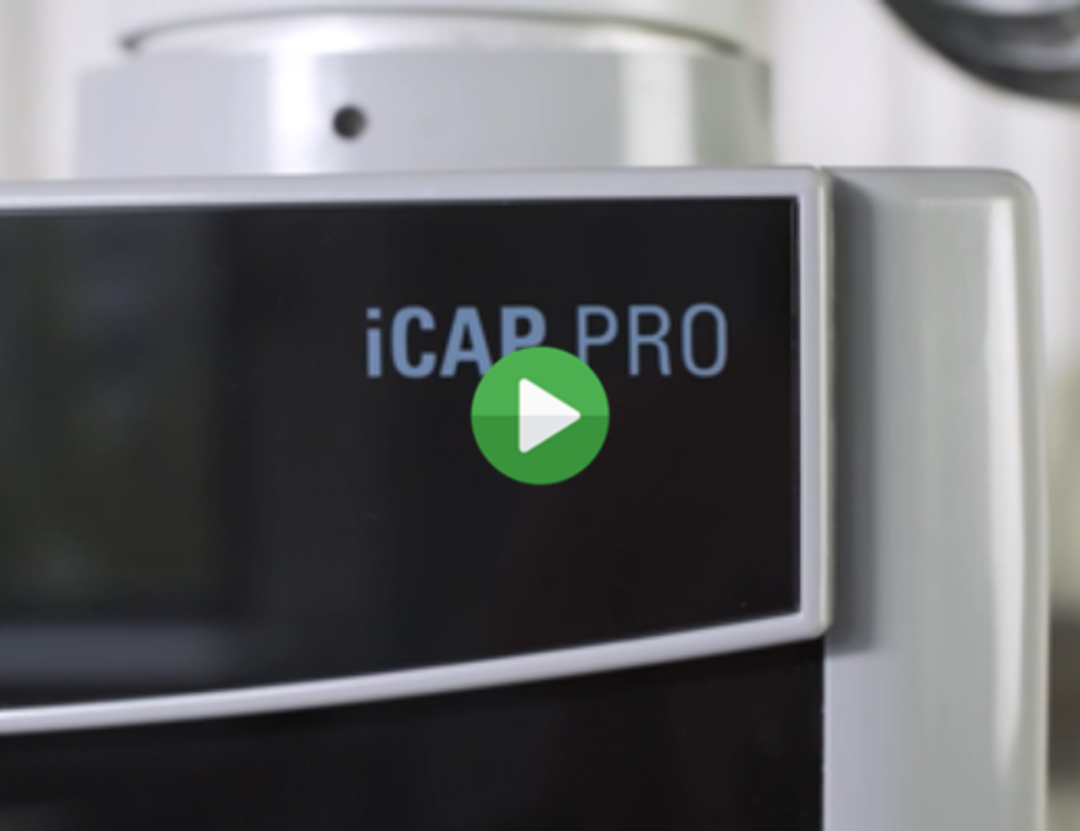
2. Wastewater and sludge
Learn how the iCAP PRO XP ICP-OES Duo and iCAP MSX ICP-MS can be used to analyze environmental samples and wastewater samples to meet all the requirements of the EPA Method 6010D and EPA Method 6020B. Plus, see how Thermo Scientific™ Qtegra™ Intelligent Scientific Data Solution Software allows easy method development, implementation of quality control protocols, and corrective actions based on EPA methods.
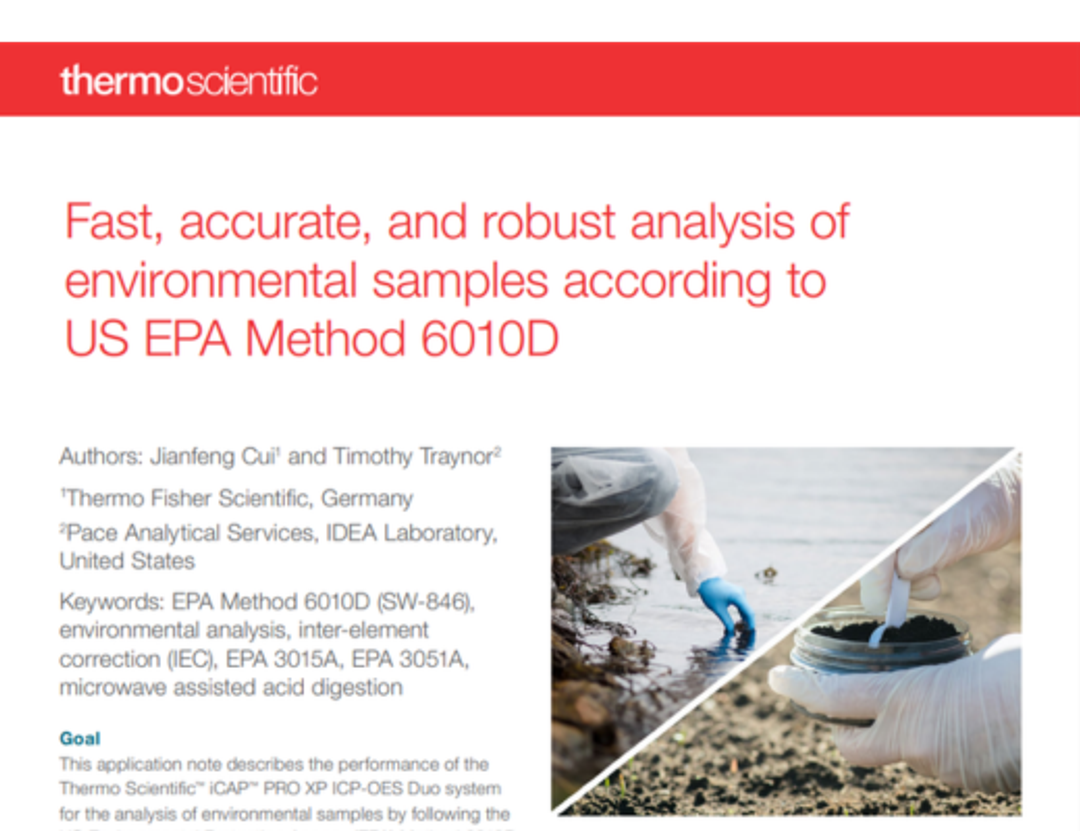

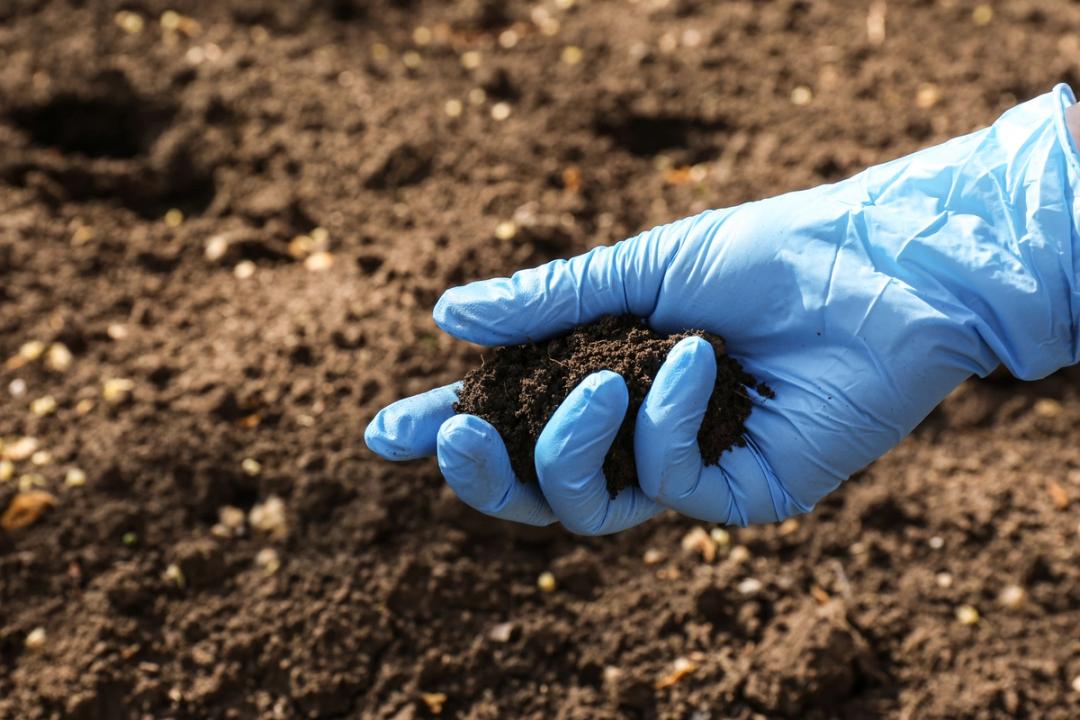
3. Sea waters
See how Thermo Scientific™ triple quadrupole technology can be used for direct analysis of trace elements in complex environmental samples such as sea water, brackish water, lake water, or river water. Plus, see how oxygen reaction mode can be used to attenuate potential interference problems associated with the measurement of ultra-trace levels of radioactive iodine.
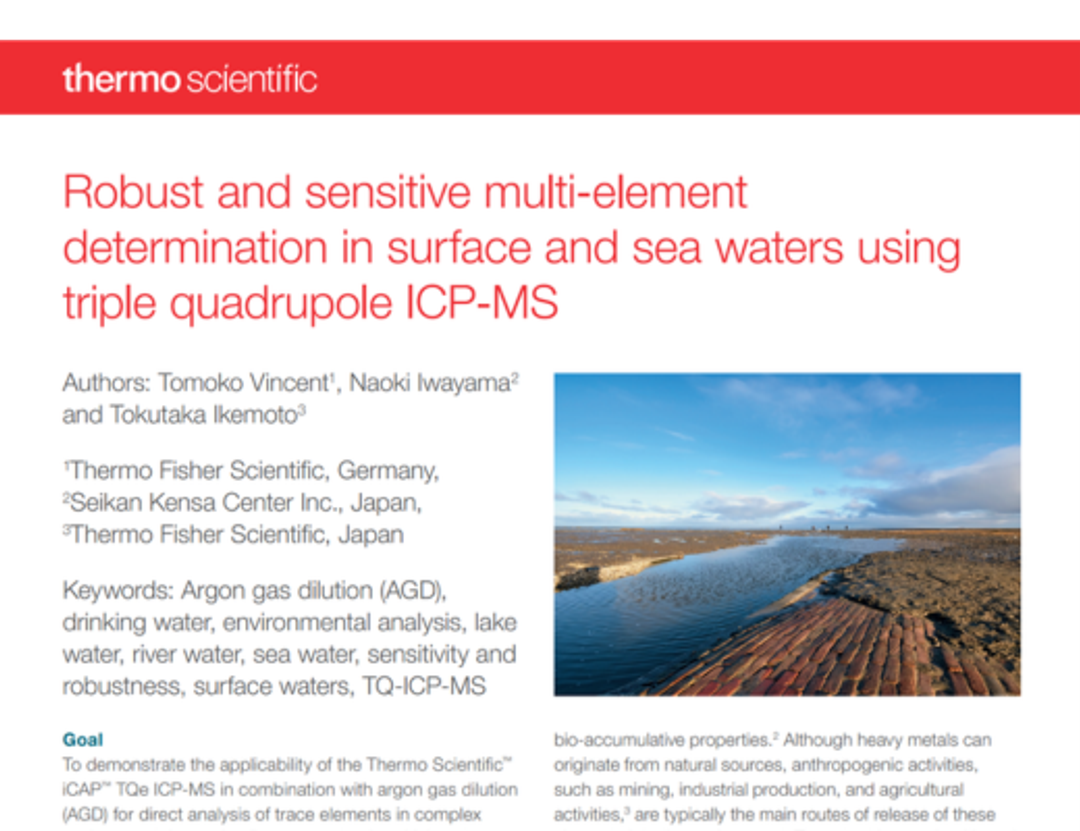
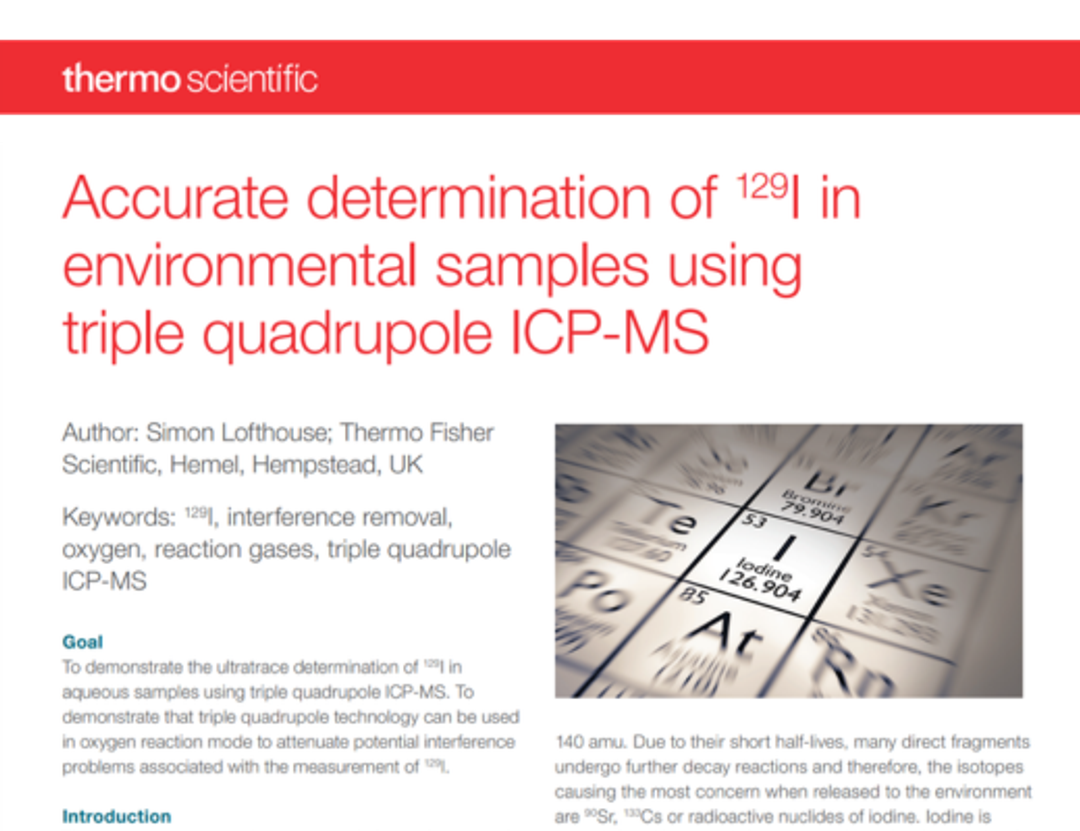
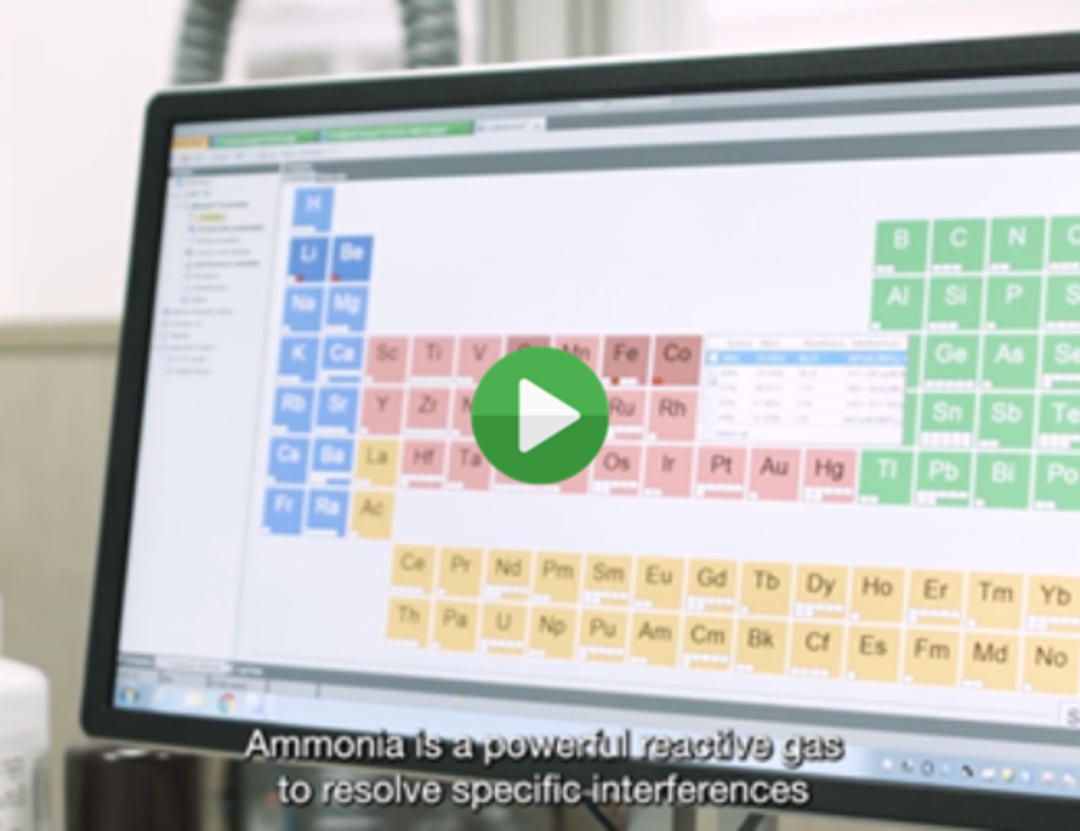

Wet chemistry for water quality
Analysis of drinking water for contaminants such as inorganic anions, cations, heavy metals, organic pollutants, and nutrients is required to protect public health. It is also important to provide drinking water with good aesthetic quality without causing damage to the distribution system. In the United States, the quality of drinking water is regulated and supervised by the U.S. EPA, while water quality parameters are regulated under the 40 CFR Part 141 National Primary Drinking Water Regulations. For labs performing water quality testing under these regulations, the Thermo Scientific™ Gallery™ and Thermo Scientific™ Gallery™ Plus Aqua Master Discrete Analyzers can provide automated, high-throughput methods that comply with EPA methods. Combined with ready-to-use reagents, these instruments enable simultaneous analysis of multiple parameters from the same sample aliquot, automatic spiking procedures, flexible test and QC parameter configuration, and versatile result reporting.
1. Drinking water
See how the Gallery Discrete Analyzer can be used for an EPA-approved alternative method for testing drinking water for orthophosphate. Plus, discover how it offers laboratories an approach to compliant nitrate + nitrite testing that minimizes the challenges associated with traditional cadmium reduction methods.

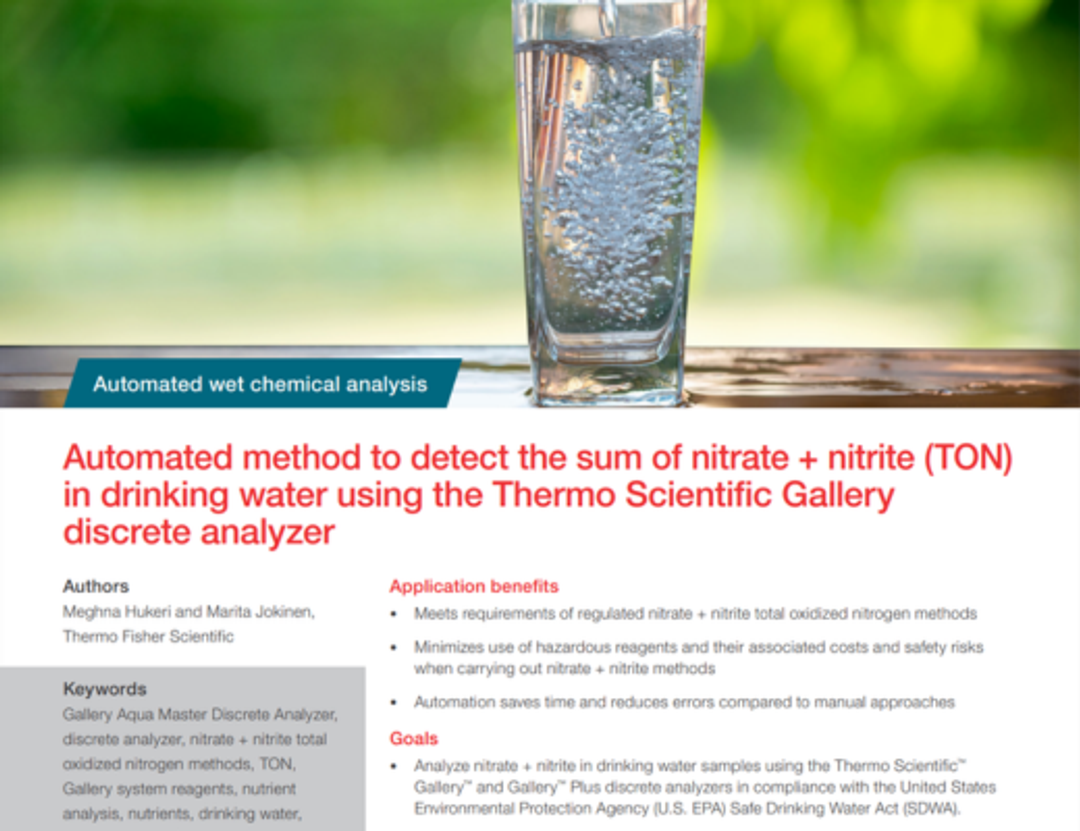
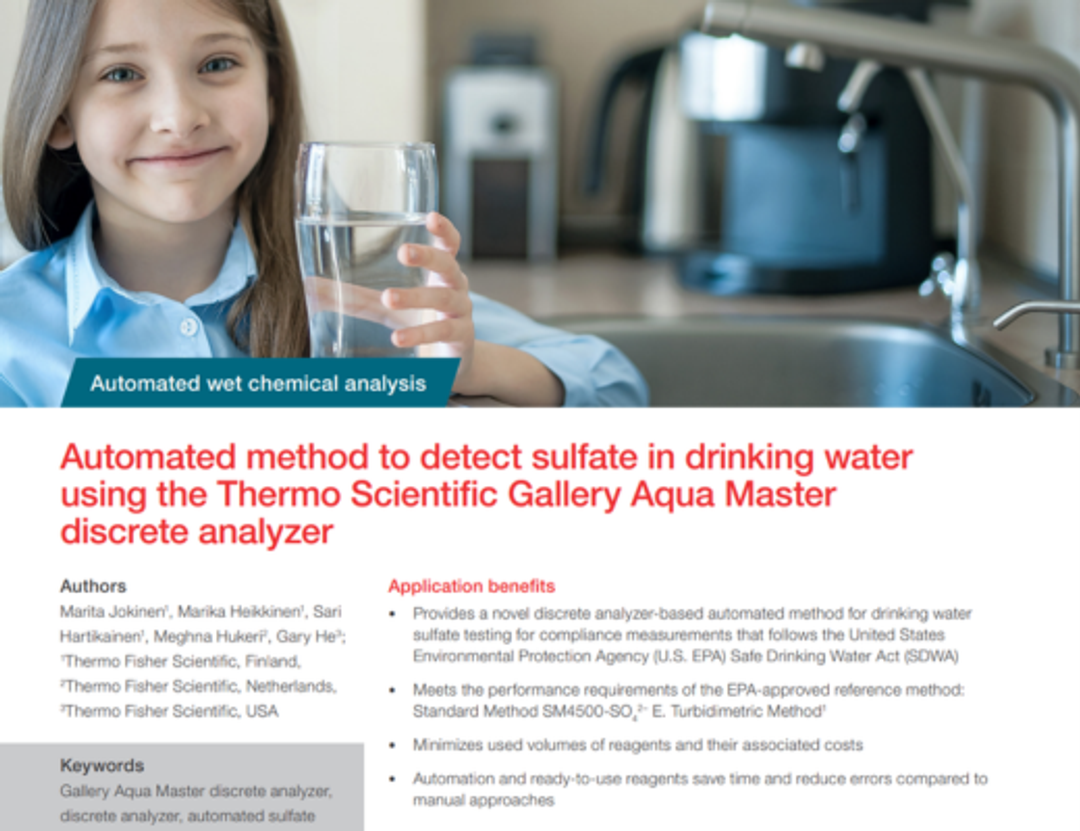
2. Wastewater, ground and surface water
Learn how the Gallery Aqua Master discrete analyzers offer a simpler and easier-to-operate testing solution compared to traditional wet chemistry methods for testing drinking water, wastewater, and soil samples – enabling up to three hours of walkaway time.

